If you have an east-facing garden, you would know how beautiful your garden looks when it gets the first rays of the sun in the morning.
You don’t always need a south-facing house to make your plants thrive; numerous other plants survive with just 2-3 hours of sun rays every day.
In fact, many of them grow just fine, even with less than required sunlight.
Below you’ll see a list of the stunning plants that will grow well on the East facing side of a house.
30 Plants for East-Facing Side of House
- Variegated Jacob’s Ladder
- Himalayan Blue Poppy
- Oakleaf Hydrangea
- Patriot Plantain Lily
- Enchantress Hydrangea
- Early Scout Fernleaf Peony
- Petite Plum Ninebark
- Yesterday-Today-and-Tomorrow
- Ferns
- Henbit Deadnettle
- Peaches and Cream Honeysuckle
- Grecian Pattern Plant
- Caladium
- Astilbe
- Barberry
- Primrose
- Variegated Sweet Iris
- Japanese Maple
- Brilliant Red Chokeberry
- Japanese Aralia
- Daylillies
- Pansy
- Violet (Genus Viola)
- Azaleas
- Hydrangeas
- Fuchsia
- Variegated Lilyturf
- Hybrid Lenten Rose
- Florist’s Cyclamen
- Virginia Bluebells
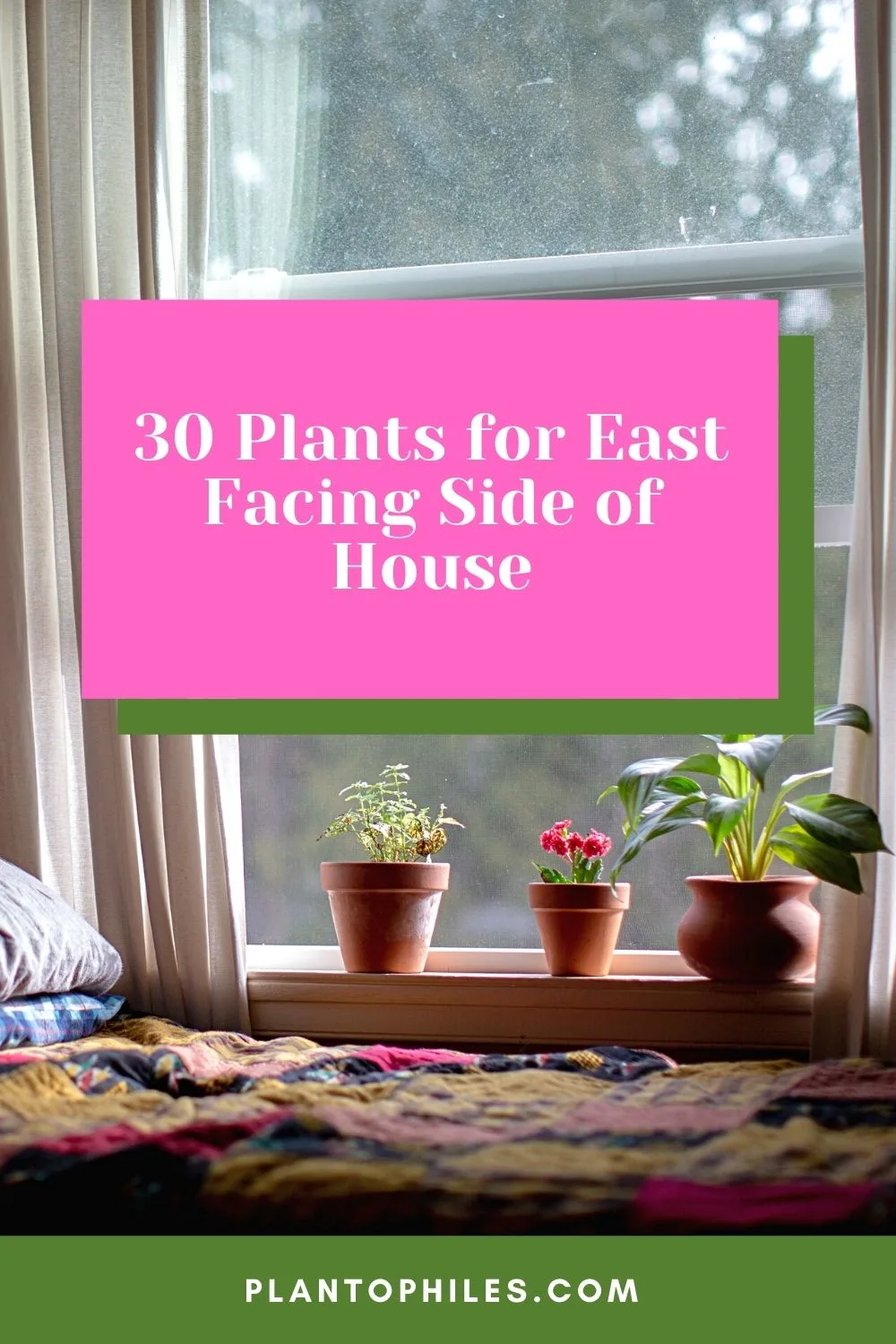
30 Plants for East Facing Side of House
30 Plants for East Facing Side of House
1. Variegated Jacob’s Ladder

Variegated Jacob’s Ladder is a low-maintenance perennial that thrives in east-facing side of the house
This woodland perennial plant thrives in a shady or partially shady area.
If provided with intense heat or too much sunlight, the leaves of Variegated Jacob’s Ladder may scorch.
Among its best features, the foliage of Jacob’s Ladder makes it extra attractive.
Jacob’s Ladder blooms between April to August according to North Dakota University.
Rather than having multiple stems with leaflets, the plant has densely packed leaflets that are almost fern-like, stretching from stem to stem, like the ladder in Jacob’s dream.
The formation of this ladder is called pinnate. Based on the cultivar, the plant has loosely clustered flowers that hang from the long stems like bells and appear to be blue, pink, white, or yellow.
Once it has adequately grown, Jacob’s ladder does not require regular trimming and thus, is excellent for growing in a garden with easy maintenance.
The binomial nomenclature and essential plant care requirements of Jacob’s Ladder include:
- Scientific name: Polemonium caeruleum
- Family: Polemoniaceae
- Temperature: USDA hardiness zones 3-9 (-30°F – 25 °F)
- Fertilizer: needs balanced fertilizer once during early spring and after the flowers fade
- pH: 6.2 – 7.0
- Soil: well-drained, rich soil
- Lighting: partial shade to full shade
- Growth rate: Moderate
2. Himalayan Blue Poppy
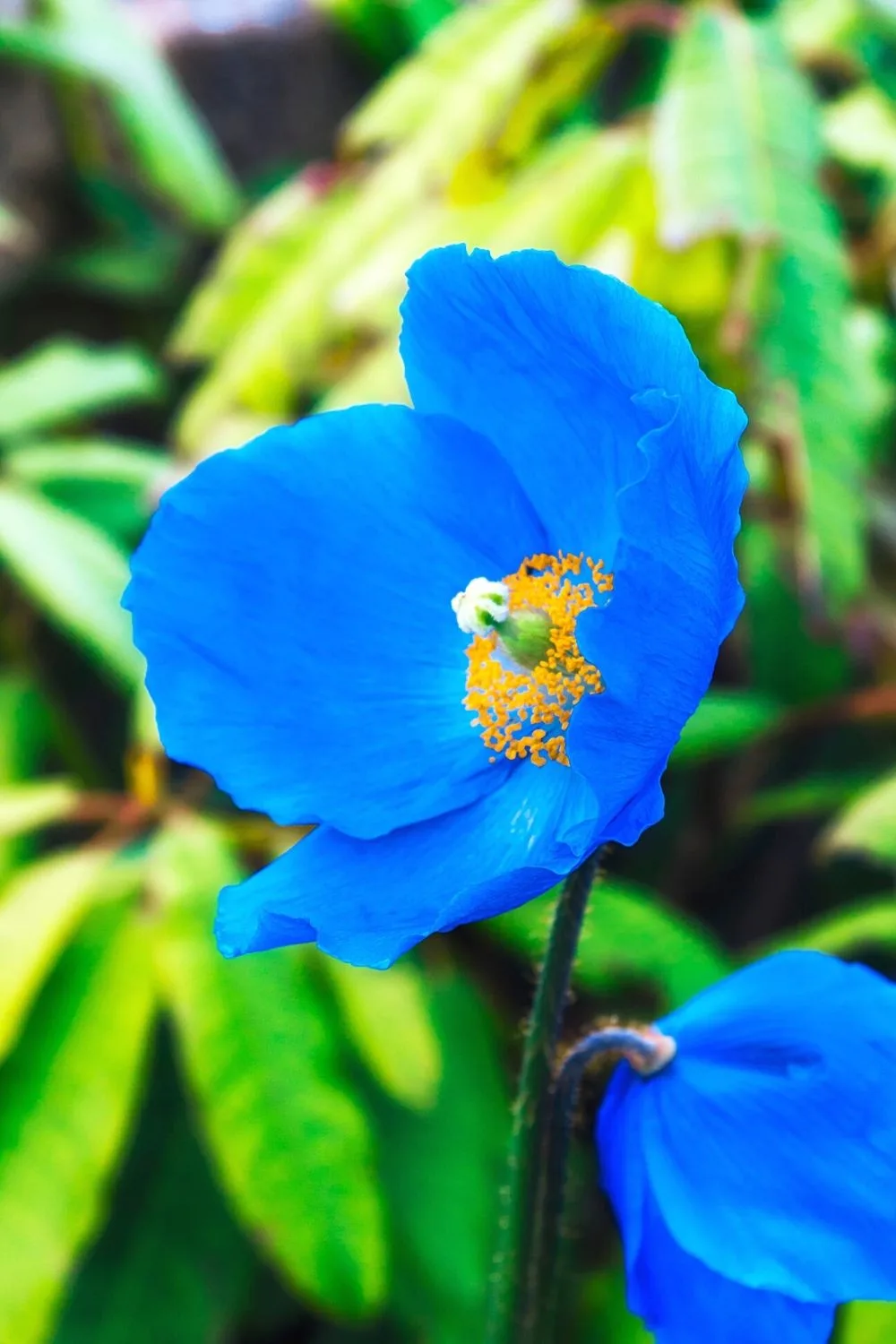
If you want a lovely pop of blue in the east-facing side of the house, Himalayan Blue Poppy is the best plant to go
The blue poppy plant is a beautiful perennial and will look stunning in your east-facing garden.
As the name suggests, the Himalayan blue poppy completely resembles a poppy but has an eye-catching cool blue color.
These perennials can grow pretty tall, up to 3-5 feet (1-1.5 meters), and consist of hairy leaves just like other poppies. It has large blooms, which may be deep blue or purple colored.
The binomial nomenclature and essential plant care requirements of the blue poppy include:
- Scientific name: Meconopsis betonicifolia
- Family: Papaveraceae
- Temperature: Below 80 °F (26.6 °C) during the day and freezing point at night
- Fertilizer: needs a slow-release granular fertilizer during the summer and spring growth period
- pH: 5.2 – 6.2
- Soil: loamy, well-drained, acidic, and moist soil with rich organic matter
- Lighting: partial shade
- Growth rate: slow
3. Oakleaf Hydrangea
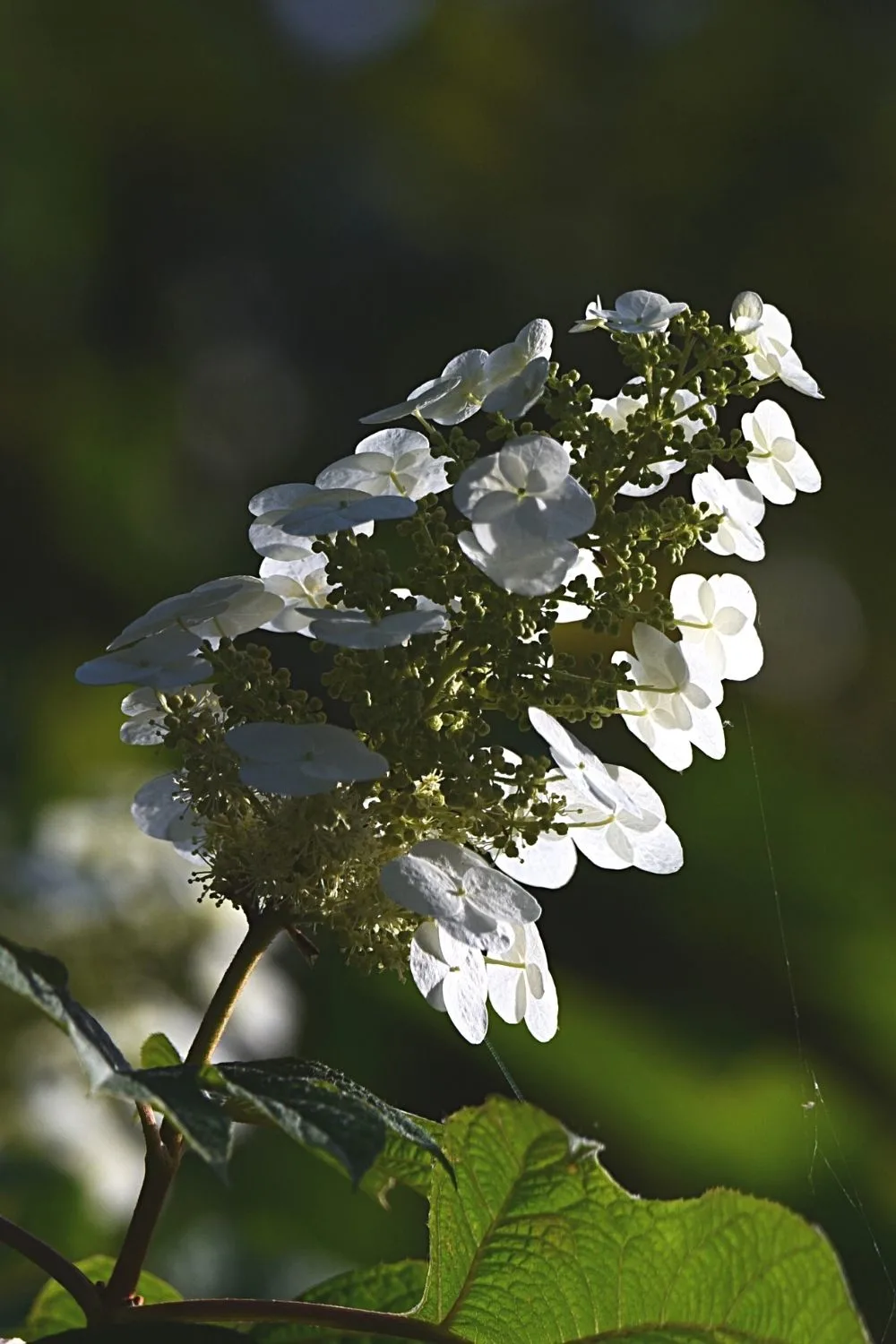
Oakleaf Hydrangea, aka Queen of the Shade, is another stunning plant you can grow on the east-facing side of the house
Oakleaf Hydrangea, also known as Queen of the Shade, has huge clusters of flowers and big distinctive leaves, consisting of lobes similar to Oak Tree.
This plant is cherished for having long-lasting flowers, initially white but gradually turning to purplish pink.
The binomial nomenclature and essential plant care requirements of the Oakleaf Hydrangea include:
- Scientific name: Hydrangea quercifolia
- Family: Hydrangeaceae
- Temperature: -15 °F (−26.1 °C) to 25 °F (−3.9 °C)
- Fertilizer: have minimal fertilizer needs of a granular 10-10-10 fertilizer in the late winter.
- pH: 5.0-6.5
- Soil: fertile, organic, well-drained, moist, and a little acidic
- Lighting: morning sun with afternoon shade
- Growth rate: slow to medium
4. Patriot Plantain Lily
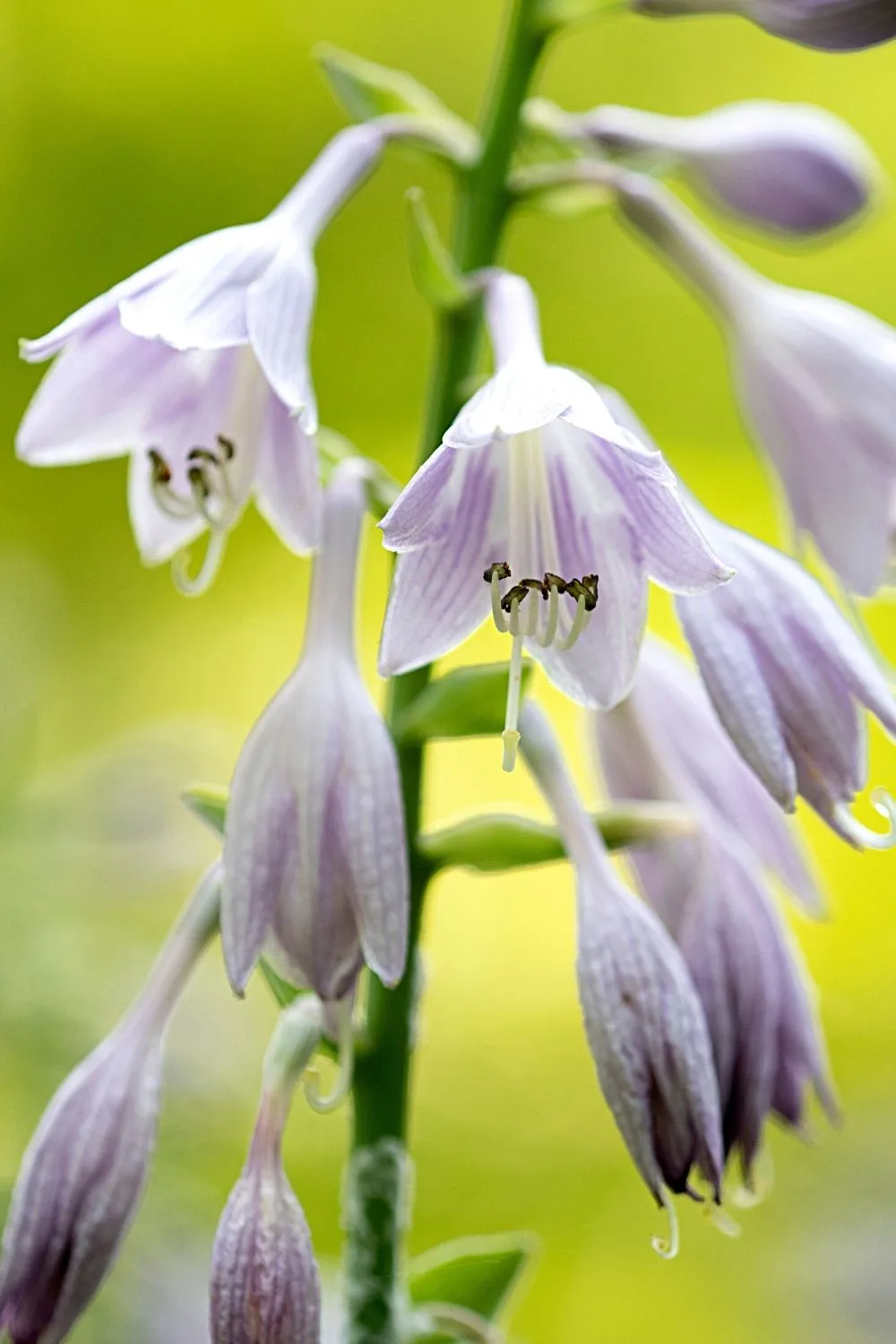
Patriot Plantain Lily is another perfect plant you can grow on the east-facing side of the house
Patriot Plantain Lily is a perennial, growing up to 55 cm in length and spreading up to 127 cm wide.
It produces funnel-shaped spikes and lavender-blue blooms in summers and puckered, ovate, olive green leaves with irregular, cream-colored margins during autumn and spring.
The Patriot plant is a perfect garden plant enhancing the beauty of houses facing east.
- Scientific name: Hosta plantaginea
- Family: Hosta – Plantain Lilies
- Temperature: −35 °F (−37.2 °C) to 10 °F (−12.2 °C)
- pH: 6.5 – 7.5
- Soil: Rich in humus having a little clay and sand, well-drained and moist
- Lighting: partial to full shade
- Growth rate: moderate
5. Enchantress Hydrangea
This plant with big, bold blooms is perfect for your east-facing garden if you love flowers.
Enchantress Hydrangea produces fresh green leaves with stunning black stems. What makes them worth adoring is their beautiful blue flowers that bloom all summer.
- Scientific name: Hydrangea macrophylla ‘Monmar
- Family: Hydrangeaceae
- Temperature: 4-9 zones
- pH: <5.5
- Soil: needs acidic soil that is moist and well-drained
- Lighting: 4-6 hours of sunlight
- Growth rate: moderate
6. Early Scout Fernleaf Peony
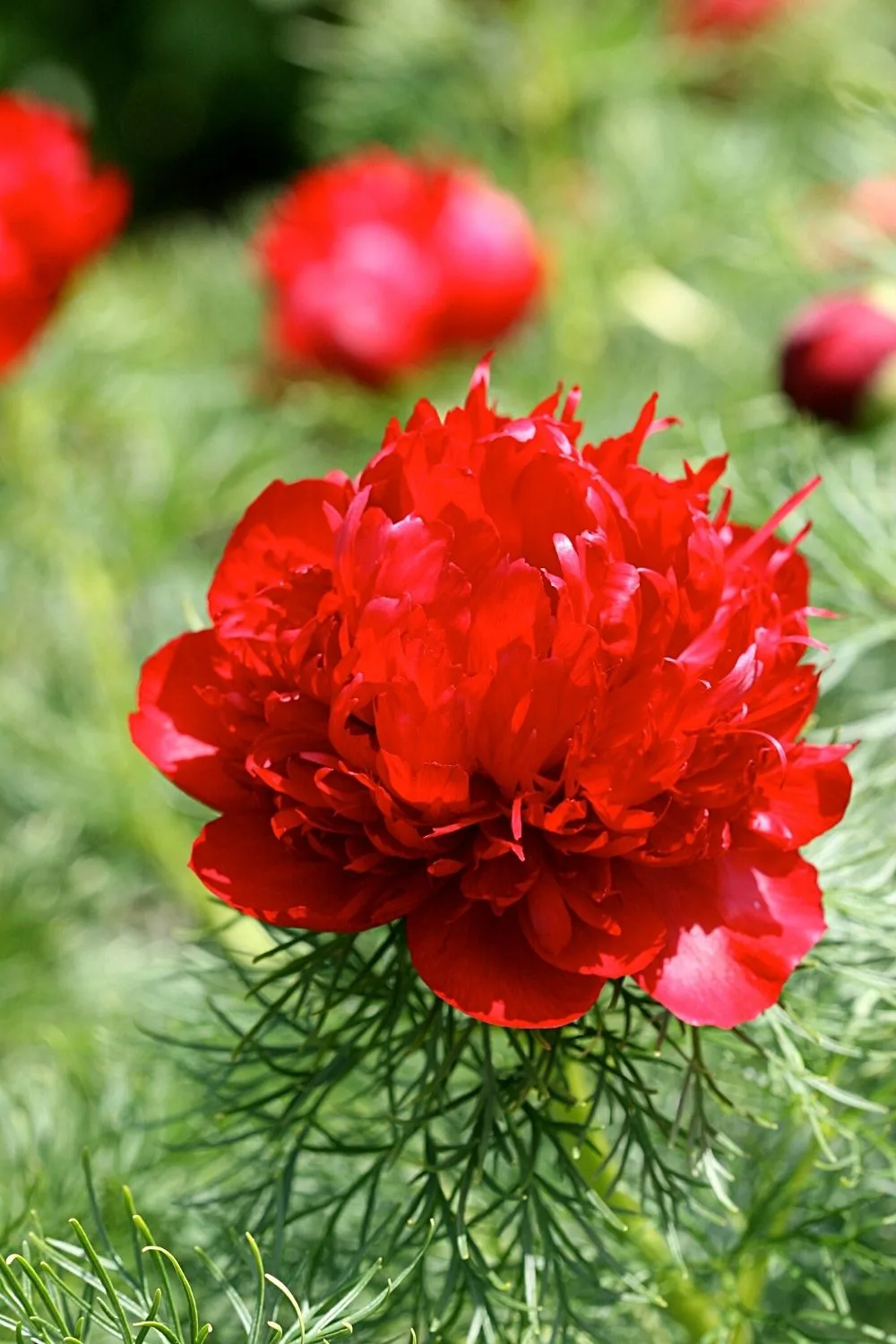
Despite being costly to grow, Early Scout Fernleaf Peony is worth-adding to the east-facing side of the house as it grows slower and lasts long
Fernleaf peony plants are the earliest peonies that bloom and have fine-textured, unique, and fern-like foliage.
Its flowers emerge a bit earlier than other peonies, mainly at the end of spring and early summer.
Although these plants are costly, they are worth their price as they grow at a slower pace and last long.
- Scientific name: Paeonia ‘Early Scout.’
- Family: Paeoniaceae
- Temperature: 0 – 45 °F (7.22 °C)
- pH: 6.5 – 7
- Soil: a little acidic soil, well-drained, medium moisture
- Lighting: full sun or partial shade
- Growth rate: moderate
7. Petite Plum Ninebark
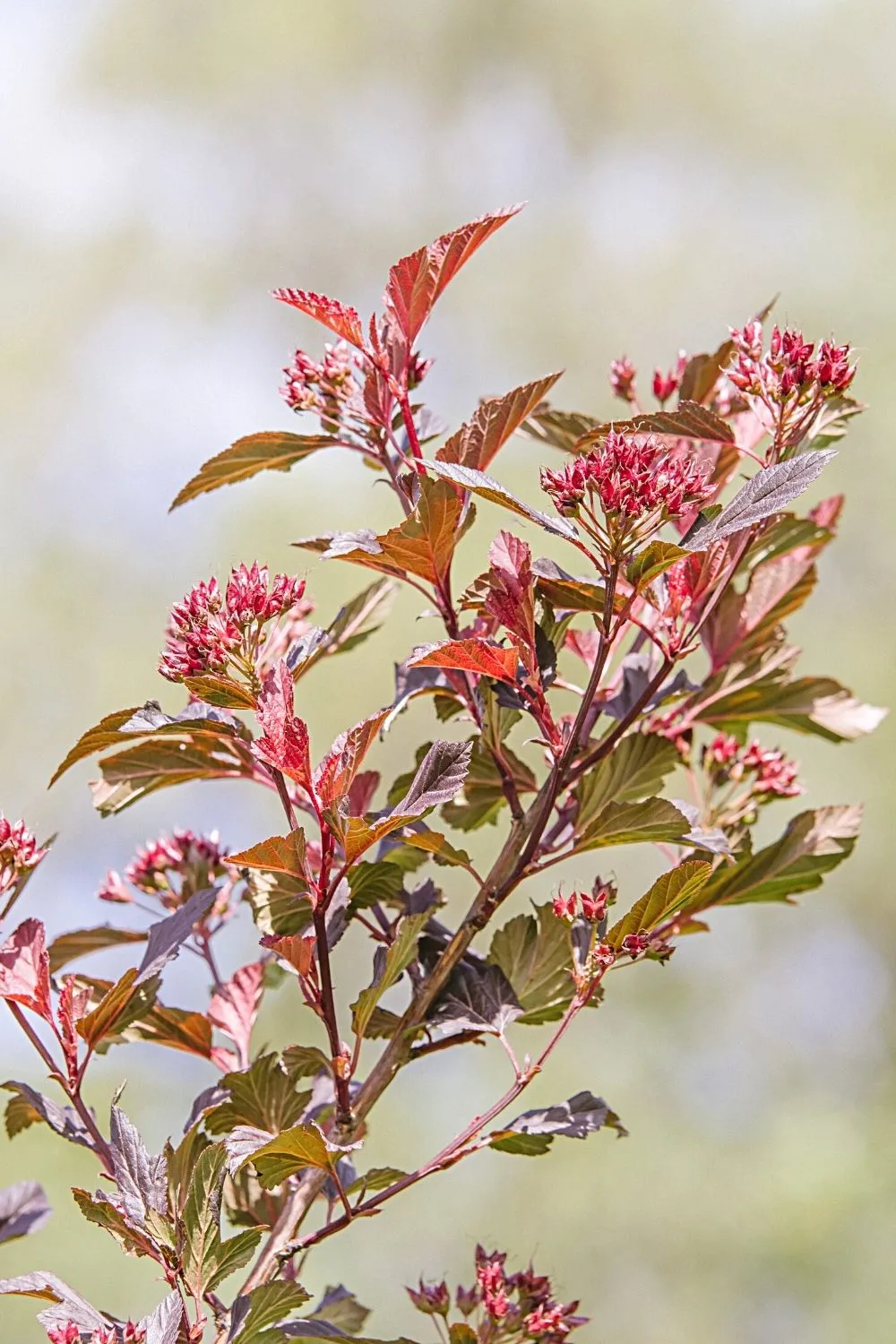
If you want a stunning low hedge plant on the east-facing side of the house, Petite Plum Ninebark is your best bet
‘Petite Plum’ exhibits deep burgundy foliage throughout the summer, making it an appealing low hedge plant in your garden. Leaves grow in spring, having a coppery-bronze tinge.
Flowers of pale pink color start to appear on the stems at the beginning of summer, followed shortly by bright red seeds pods.
- Scientific name: Physocarpus opulifolius
- Family: Rosaceae
- Temperature: >50 °F (10 °C)
- pH: 4.5 – 6.5
- Soil: well-draining, moderately moist soil and can also tolerate clay and rocky soils
- Lighting: partial shade to full sun
- Growth rate: medium
8. Yesterday-Today-and-Tomorrow
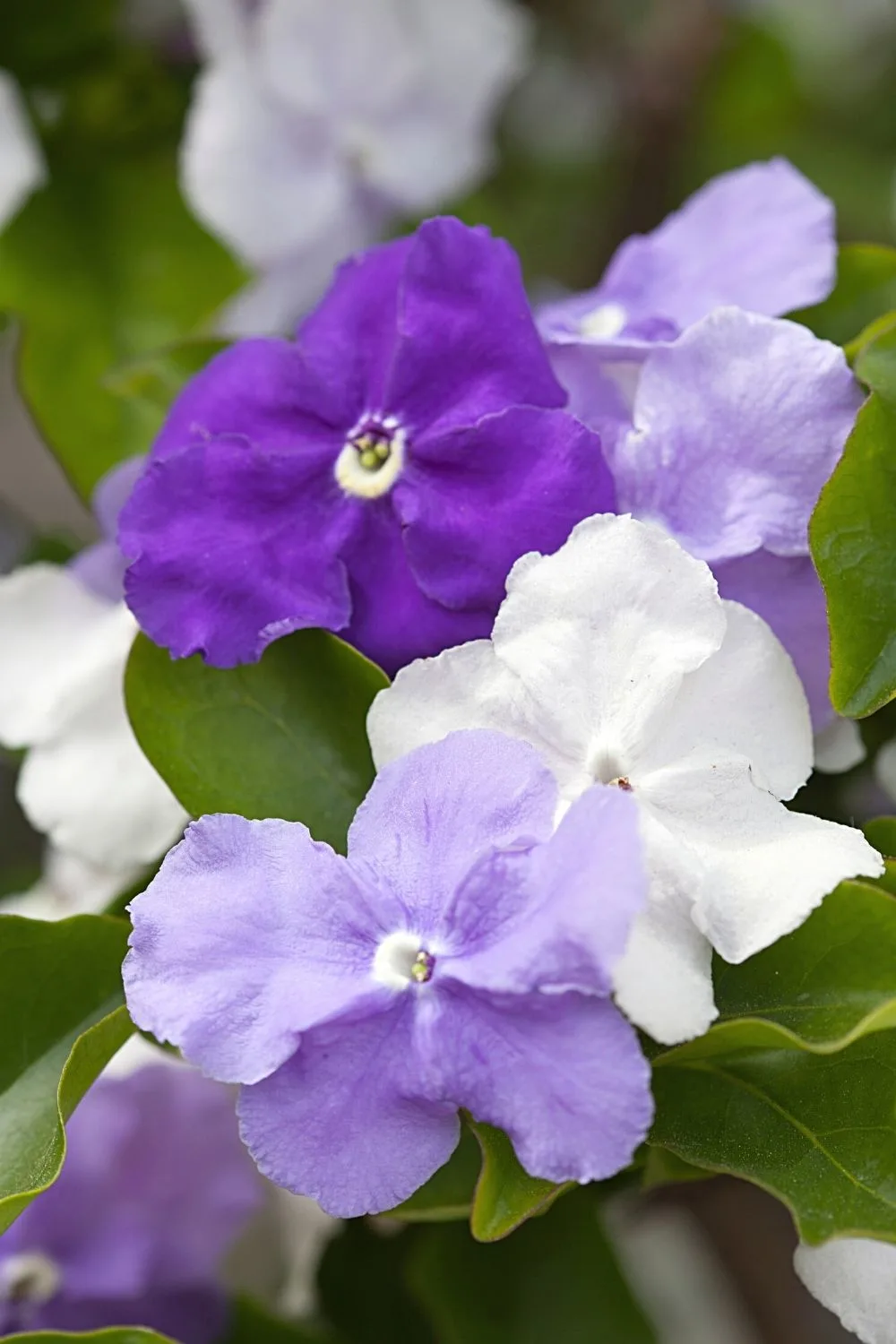
If you want a flower that changes its colors from day to day, then the Yesterday-Today-and-Tomorrow is the plant you’re looking to grow on the east-facing side of the house
The name of this plant is undoubtedly the longest on this list, however, because of one main reason.
The flowers of the Yesterday-Today-and-Tomorrow plant change color from day to day. Initially, they begin with purple, then turn to lavender, and eventually become white when fully matured.
Additionally, it requires very low maintenance and is a persistent bloomer.
- Scientific name: Brunfelsia pauciflora
- Family: Solanaceae
- Temperature: >50 °F (10 °C)
- pH: <6.0
- Soil: loamy, silt, sandy
- Lighting: partial shade to full sun
- Growth rate: moderate
9. Ferns
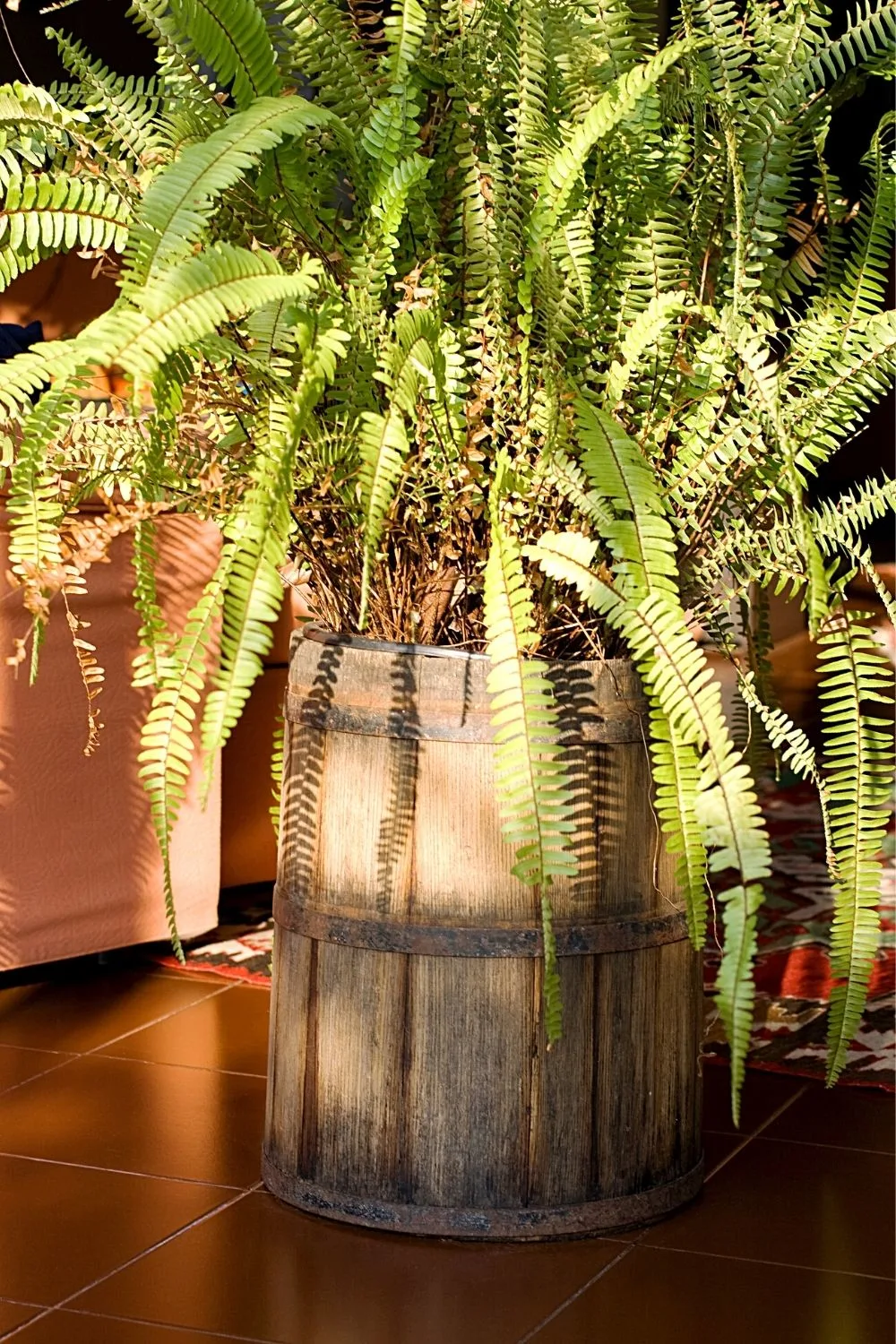
Ferns love the shade, dampness, and the coolness that the east-facing side of the house provides
Ferns thrive in moisture and shade. They love damp, cooler, and shadier areas.
Therefore, your east-facing house will be the perfect place for ferns. People usually plant ferns for appealing fronds that may grow up to 1-24 cm in length.
- Scientific name: Tracheophyta
- Temperature: 65 – 75 °F (18.3 – 23.8 °C)
- pH: 4-7
- Soil: moist soil with good drainage and rich organic content
- Lighting: can take 4 hours of direct sun in the morning
- Growth rate: slow
10. Henbit Deadnettle
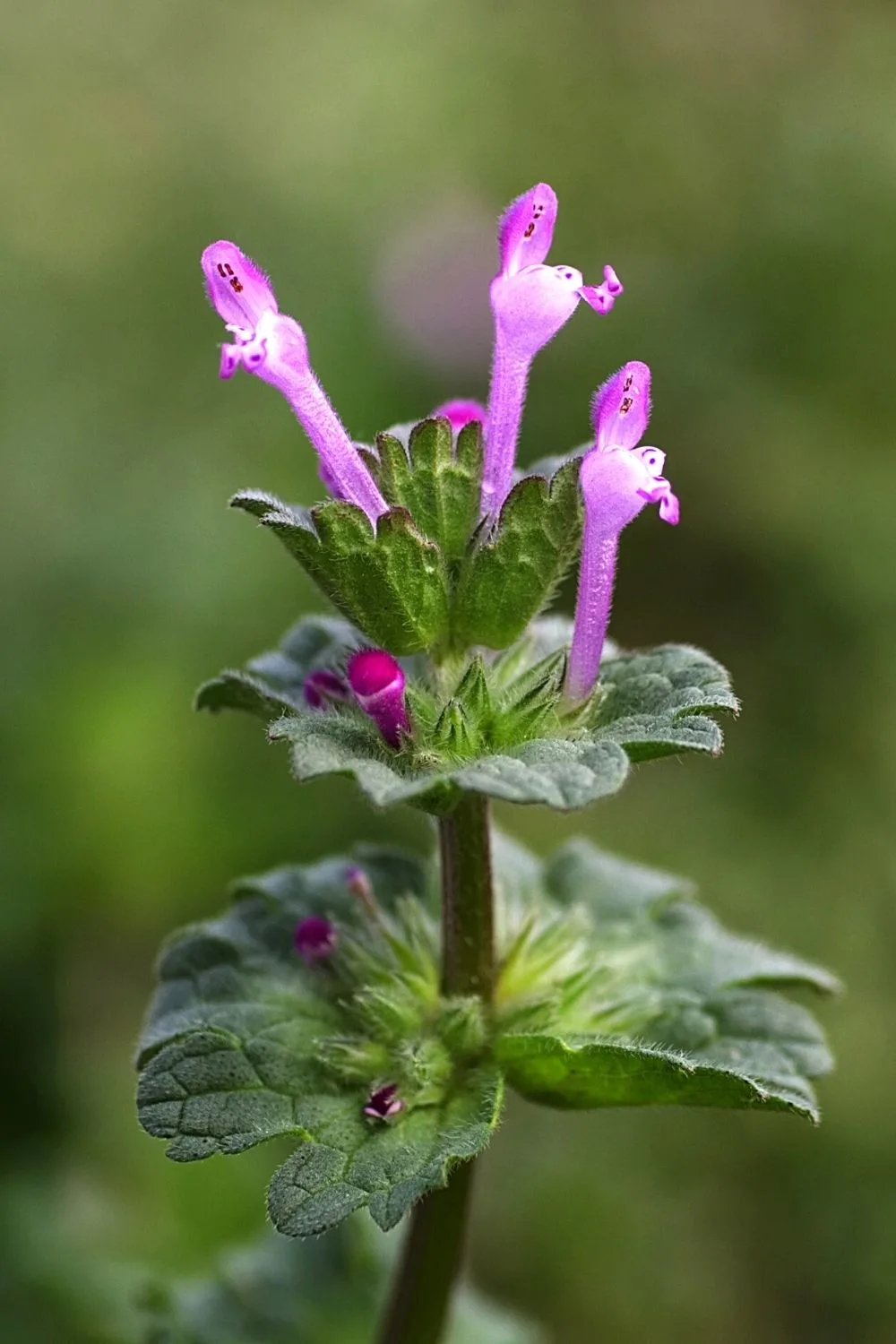
Henbit Deadnettle is another low-maintenance plant that you can add to your growing collection of plants in the east-facing side of the house
Having shade-loving plants is the best way to perk up your east-facing garden.
Henbit Deadnettle is a low-maintenance plant with stunning foliage of silver, yellow, or white color.
- Scientific name: Lamium amplexicaule
- Family: Mints
- Temperature: 41 – 77 °F (5 – 25 °C)
- pH: 6.0 – 7.0
- Soil: rich fertile soil
- Fertilizer: doesn’t need fertilizer; however, the soil must be replaced every year
- Lighting: 2 – 6 hours of sun
- Growth rate: slow
11. Peaches and Cream Honeysuckle
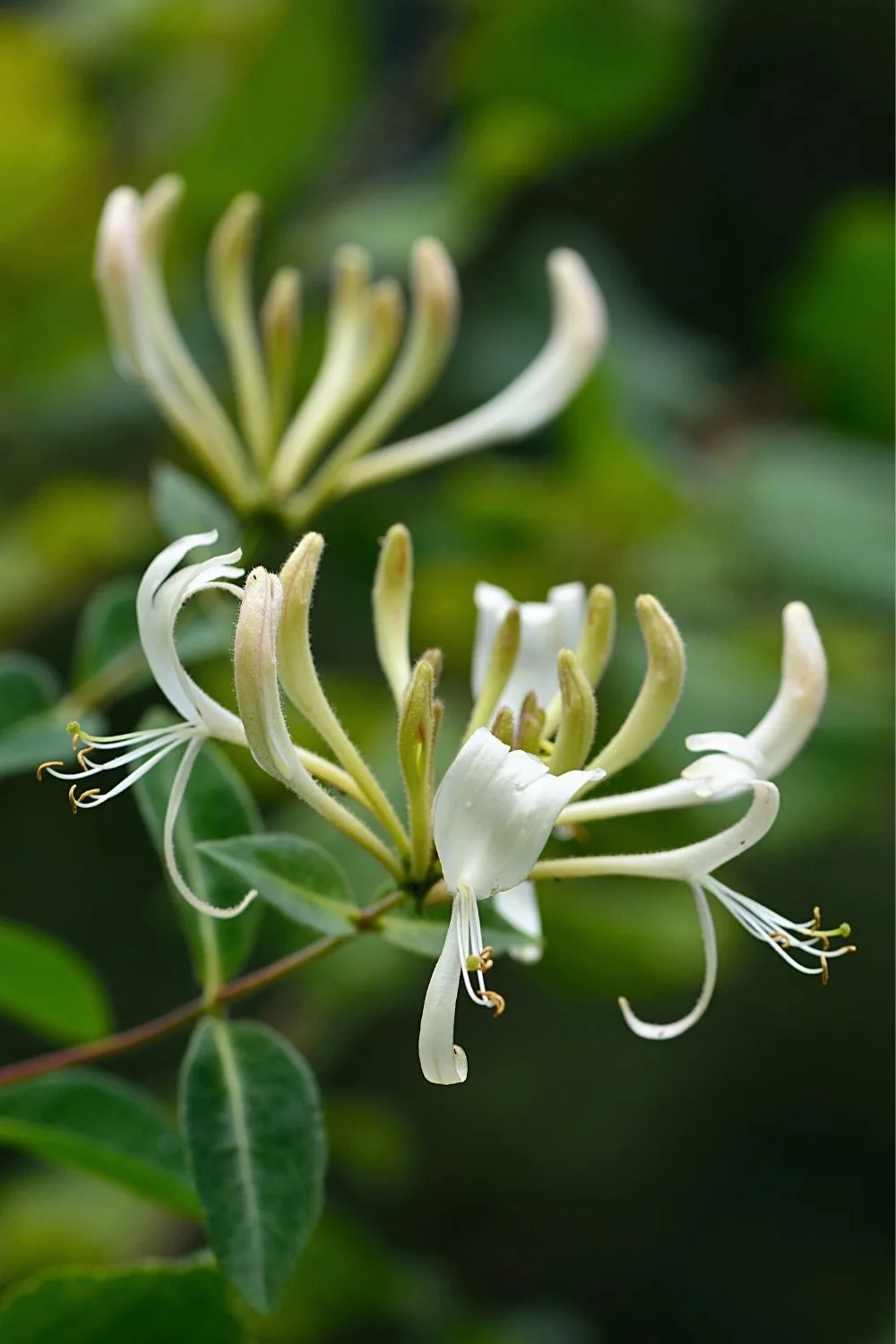
Peaches and Cream Honeysuckle enjoys the morning sun and the afternoon shade that the east-facing side of the house provides
Honeysuckles mainly enjoy the morning sun and release their beautiful scent in the afternoon shade.
They usually grow up to 6 feet in height and 3 feet in width. Its large, creamy white, funnel-shaped flowers enhance the beauty of your garden.
- Scientific name: Lonicera periclymenum
- Family: Lonicera – Honeysuckles
- Temperature: 55 – 85 °F (12.7 – 29.4 °C)
- pH: 5.6 – 6.0
- Soil: will thrive in any type of soil as long as it’s well-draining
- Fertilizer: spring is the best time to fertilize using a balanced yet slow-release fertilizer
- Lighting: full sun to partial shade
- Growth rate: fast
12. Grecian Pattern Plant
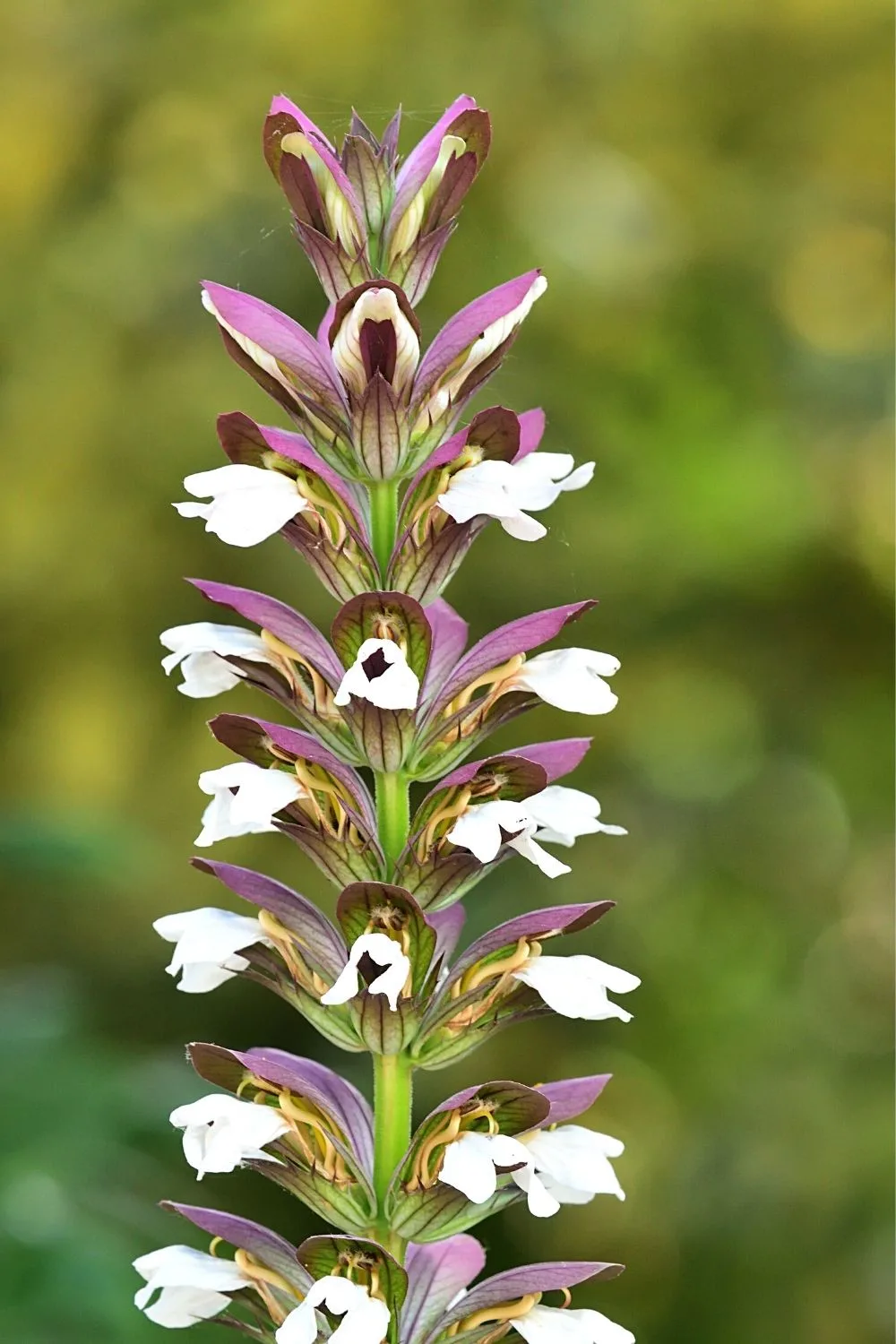
Grecian Pattern Plant is another stunning plant to grow on the side of the house that’s facing east
Grecian Pattern Plant is a beautiful perennial plant popular because of its attractive foliage and attractive flowers.
Its lavender spikes are long-lasting and have purple blooms on strong stems over the rich green foliage.
- Scientific name: Acanthus mollis
- Family: Acanthaceae
- Temperature: 10 – 104 °F (-12.22 – 40 °C)
- pH: 6.0 – 7.0
- Soil: Average moist, moderately fertile, well-drained
- Fertilizer: In early spring or late winter, apply flowering plant fertilizer across the drip line of the plant and soak the place.
- Lighting: partial to full shade
- Growth rate: slow
13. Elephant Ears
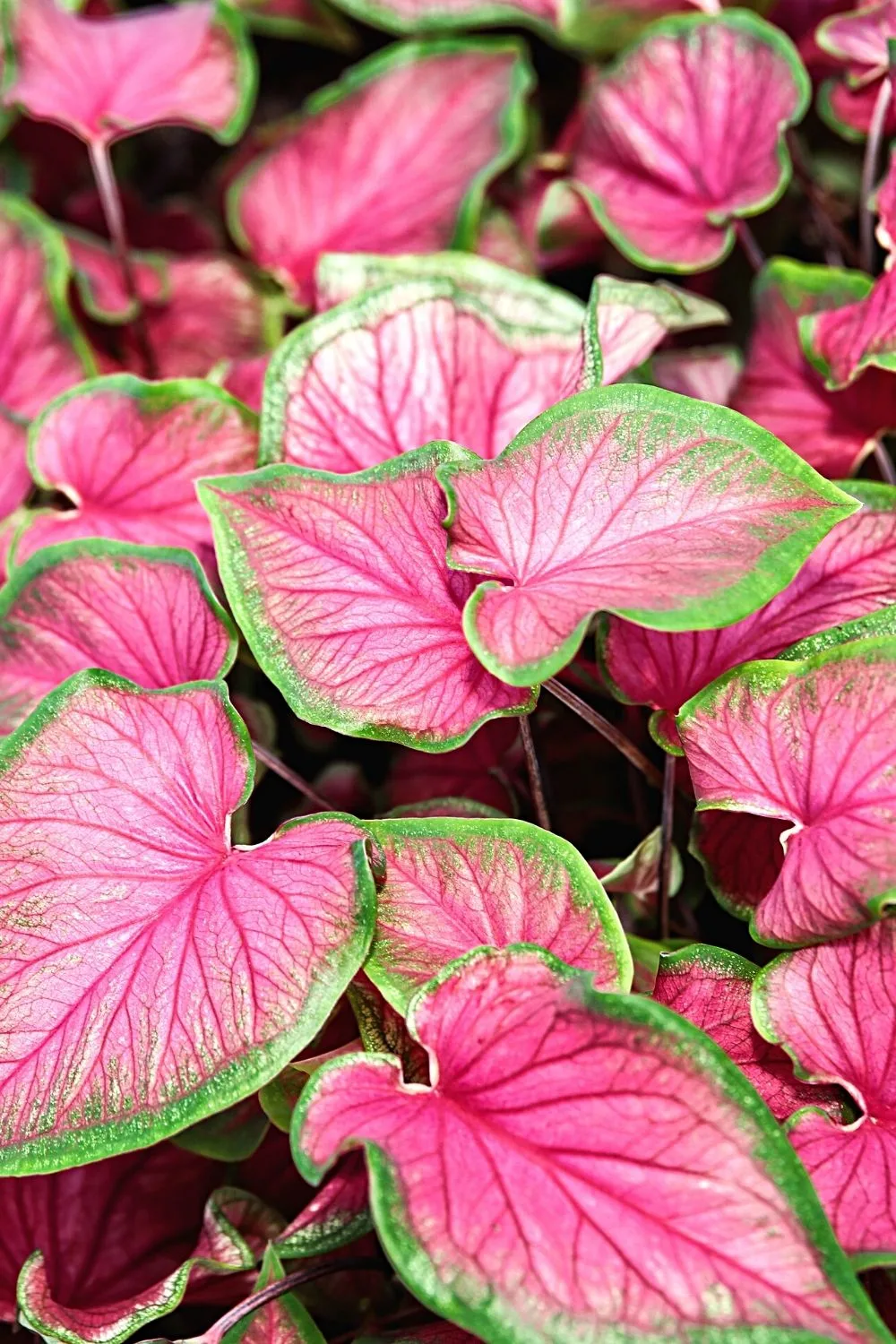
The Elephant Ears Caladium is another colorful plant you can grow on the side of the house that’s facing east
The Elephant Ears Caladium plant loves shade and thrives in east-facing gardens. Its beautiful multi-colored foliage – green, pink, red, or white – is perfect for adding color and making an eye-catching garden.
The plant is happy with just a few hours of sunlight and is great for partial or deep shade areas.
- Scientific name: Caladium
- Family: Araceae
- Temperature: 70 – 75 °F (21.1 – 23.88 °C)
- pH: 6.0 – 6.5
- Soil: soil with high moisture and enough drainage
- Fertilizer: 20-10-10 or 10-5-10 fertilizers twice during spring and summer
- Lighting: partial to full shade
- Growth rate: fast
14. False Goat’s Beard
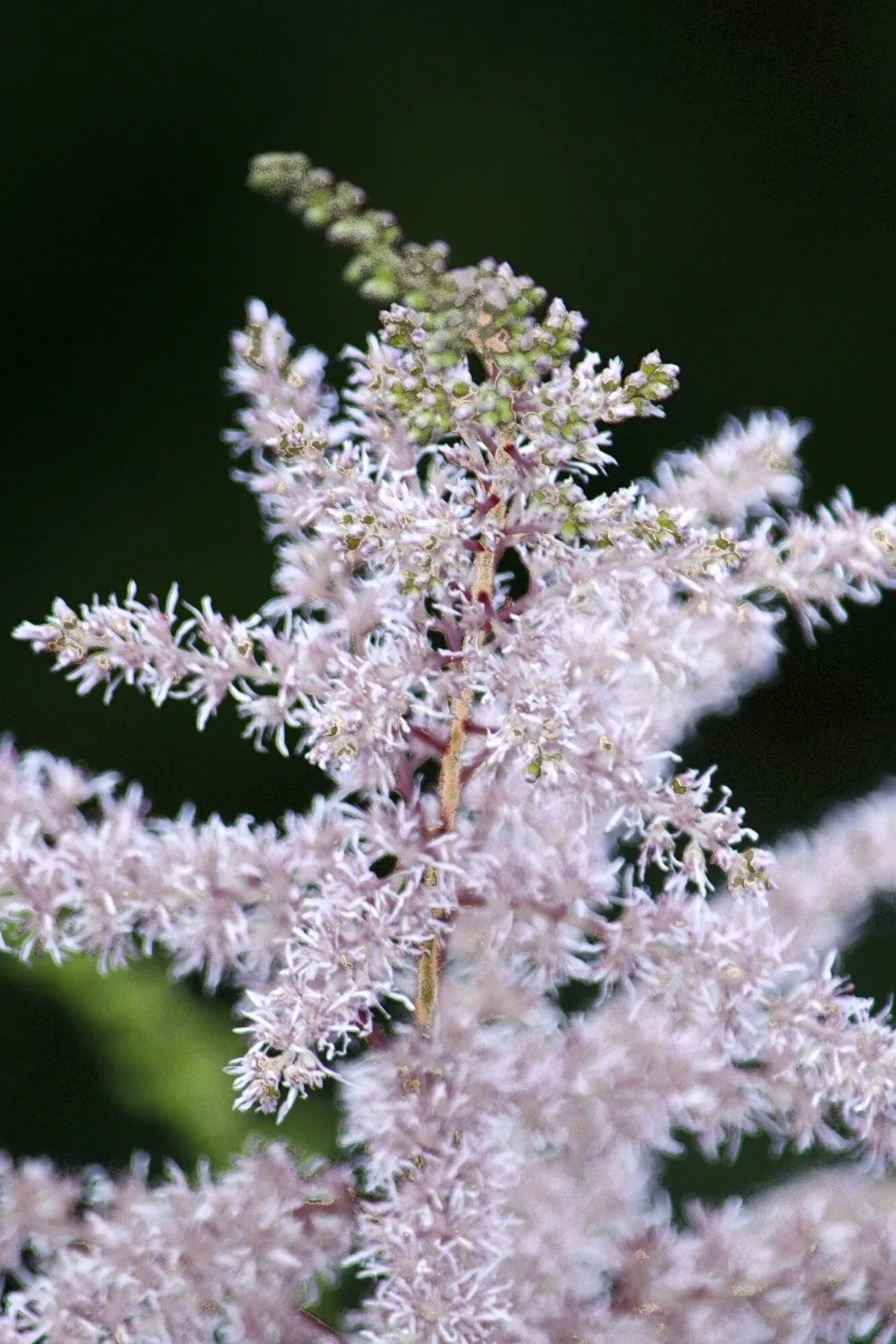
Astilbe, aka False Goat’s Beard, thrive in the few sun rays that the east-facing side of the house provides
The appealing Astilbe plant thrives well with just a few direct sun rays. This is why it stays happy even on the east-facing side of the house.
Astilbe has blooms that may range from colors of white to dark pink, along with different pastel tones in between. It has fern-like deep-green foliage.
- Scientific name: Astilbe
- Family: Saxifrages
- Temperature: >-34.6 °C (-37 °C)
- pH: 6.0 – 7.0
- Soil: well-drained, moist, rich, and organic
- Lighting: partial to full shade
- Growth rate: fast
15. Barberry
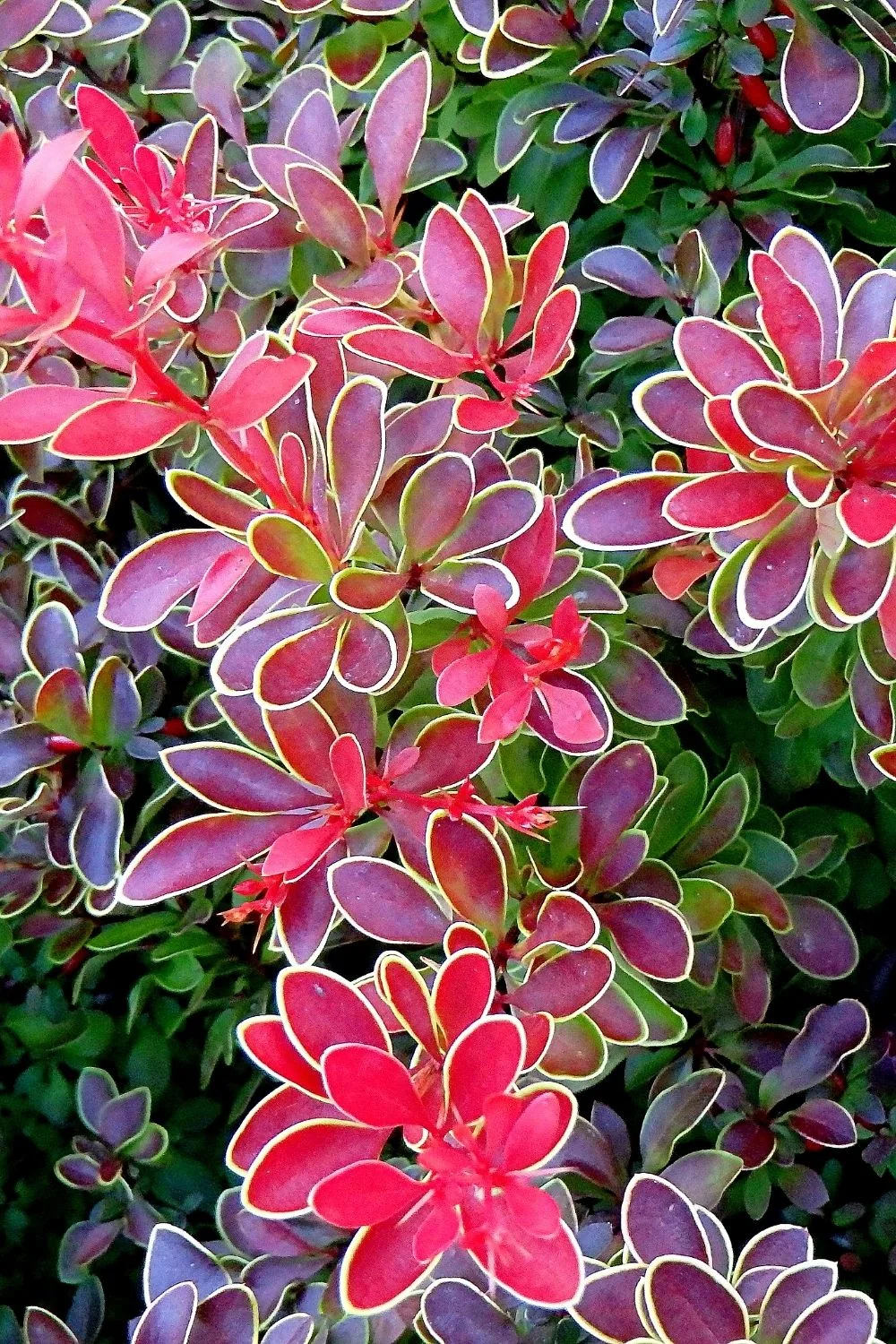
Barberry is another colorful plant to enliven the east-facing side of the house
Barberry is a perfect choice if you want to add uniqueness and a pop of color to your east-facing garden since they love shady environments.
It requires low maintenance and has a variety to choose from.
Japanese Barberry has light green leaves that turn red and orange during the fall season.
In contrast, Wintergreen Barberry offers yellow blooms with dark green leaves, which become bronze during winter.
- Scientific name: Berberis
- Family: Berberidaceae
- Temperature: 41 – 90 °F (5 – 32 °C)
- pH: 6.0 – 7.5
- Soil: well-drained, loamy soil
- Lighting: Partial shade or full sun
- Growth rate: moderate
16. Primrose
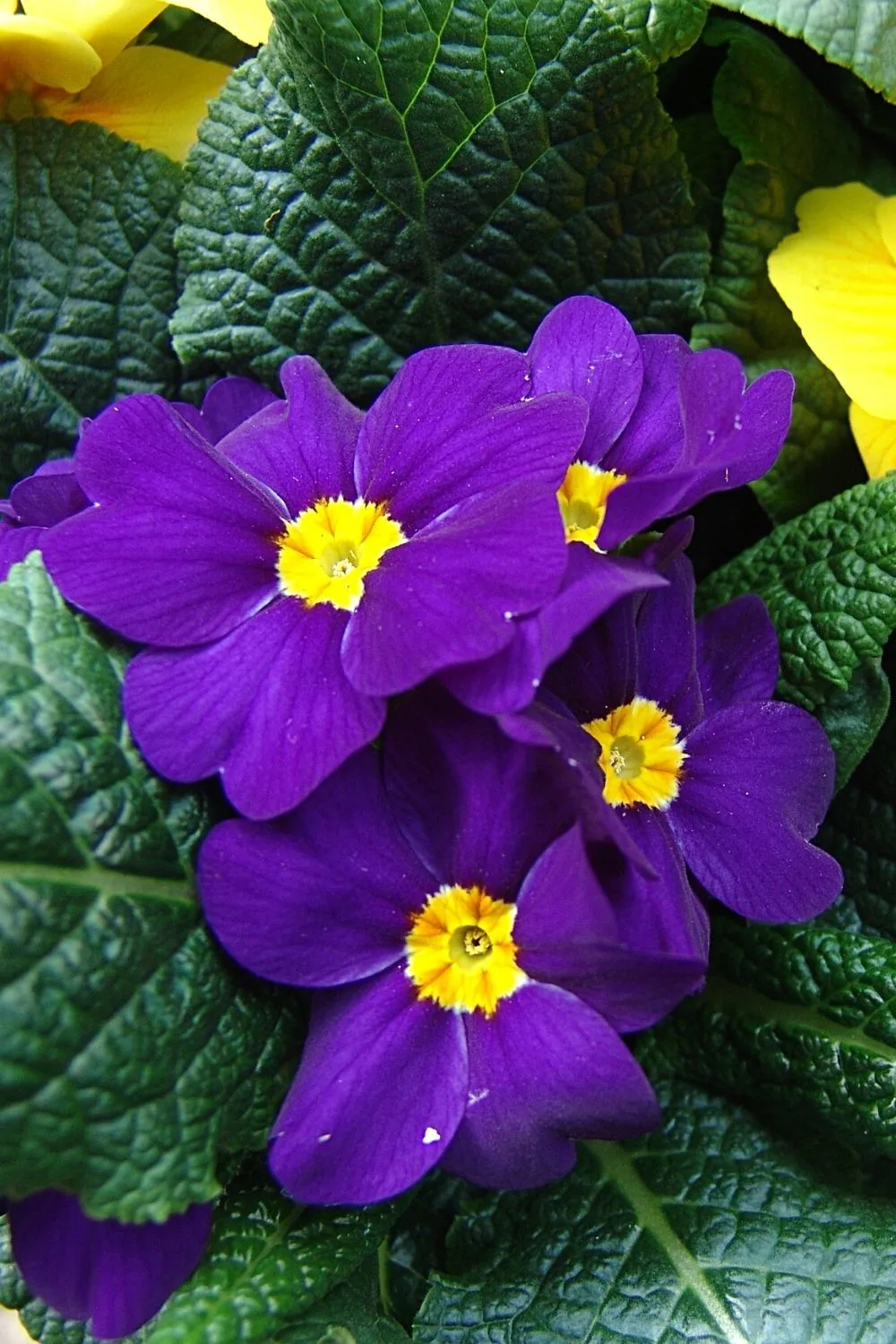
Primrose loves the damp and shady east-facing side of the house
Primroses are great for east-facing gardens as they love damp and shady areas.
They are low-maintenance and produce flowers every year. You will get flowers in pink, purple, red, or yellow.
- Scientific name: Primula vulgaris
- Family: Primulaceae
- Temperature: 50 – 80 °F (10 – 26.6 °C)
- pH: 5.5 – 8.0
- Soil: well-drained, loamy, moisture-retentive, and rich soil
- Fertilizer: Fertilize in spring using a balanced fertilizer (10-10-10) or a bloom boost (5-10-5)
- Lighting: Partial or complete shade
- Growth rate: slow
17. Variegated Sweet Iris
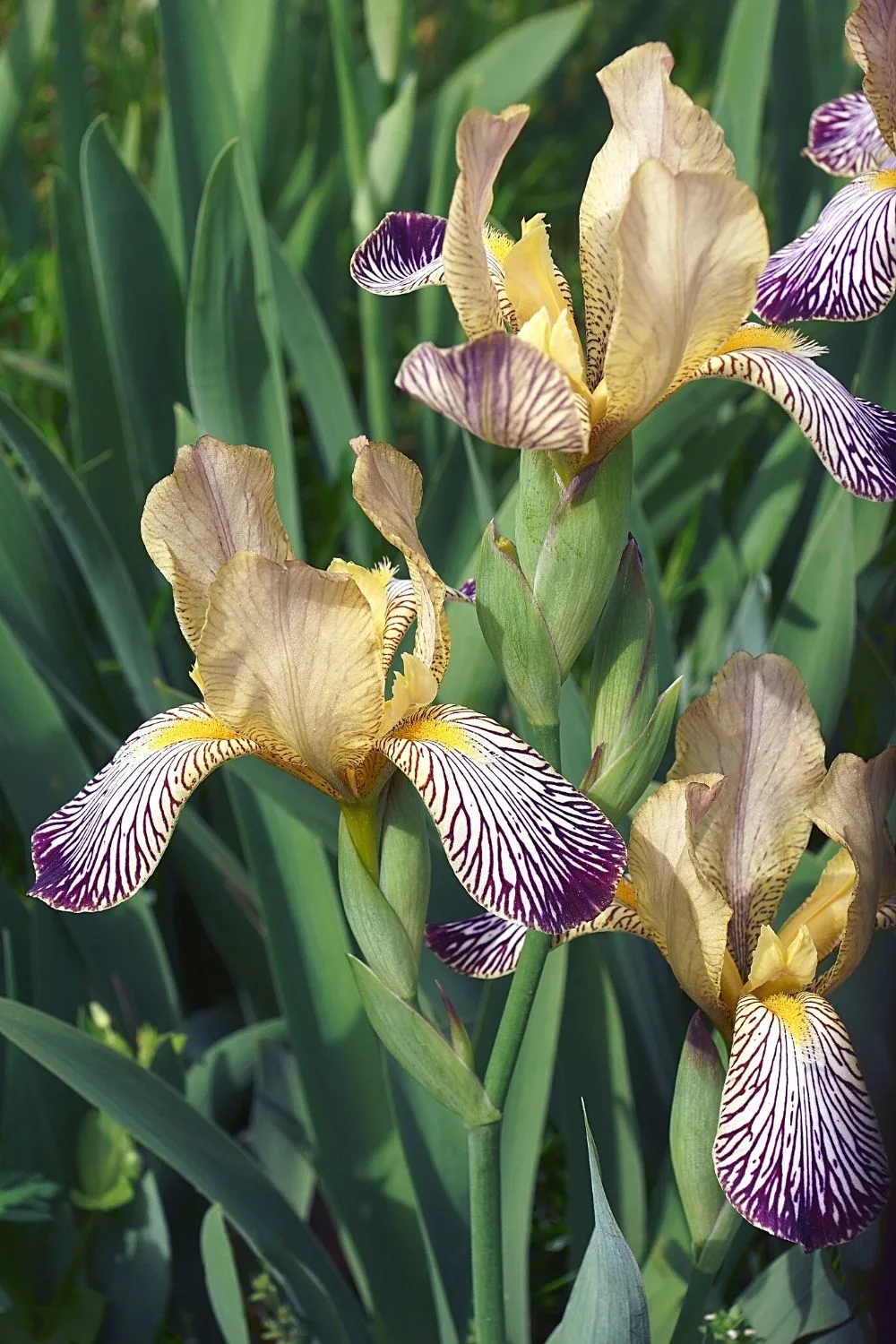
Variegated Sweet Iris is a shade-tolerant plant. hence, can thrive in the east-facing side of the house
Variegated Sweet Iris species are extra shade-tolerant among different Iris species and are great for an east-facing garden.
Its foliage is golden and green-striped, with lavender-blue blooms having a sweet scent.
- Scientific name: Iris pallida Variegata Silver
- Family: Bearded iris
- Temperature: 40 – 50 °F (4.4 – 10 °C)
- pH: 6.8
- Soil: well-drained, moist, and rich soil
- Fertilizer: in early spring, fertilize 6 – 8 weeks before the plant blooms and after the flowers have gone
- Lighting: Partial shade or full sun
- Growth rate: moderate
18. Japanese Maple
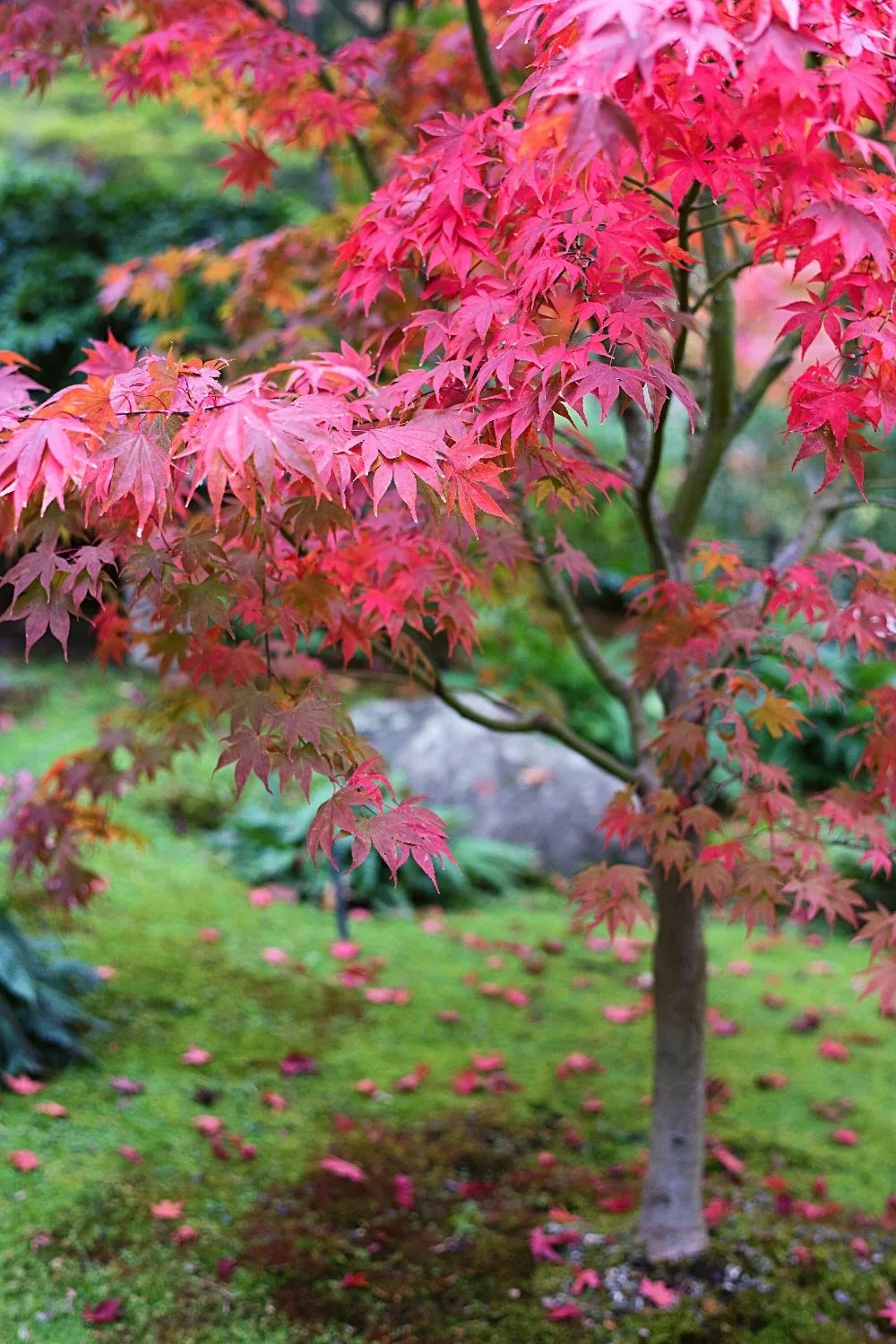
Japanese Maple loves cold, damp areas like the east-facing side of the house
Japanese Maple would not do well if you plant it in a place where afternoons are warm and sunny.
It loves cold, damp areas and will thrive best in your east-facing garden. It has lovely foliage in orange, red, purple, and yellow.
- Scientific name: Acer palmatum
- Family: Sapindaceae
- Temperature: -30 – -10 °F (-34.4 – 23.33°C)
- pH: 5.5 – 6.5
- Soil: acidic, well-drained, and rich in organic matter
- Lighting: 4 – 6 hours
- Growth rate: Slow to moderate
19. Brilliant Red Chokeberry
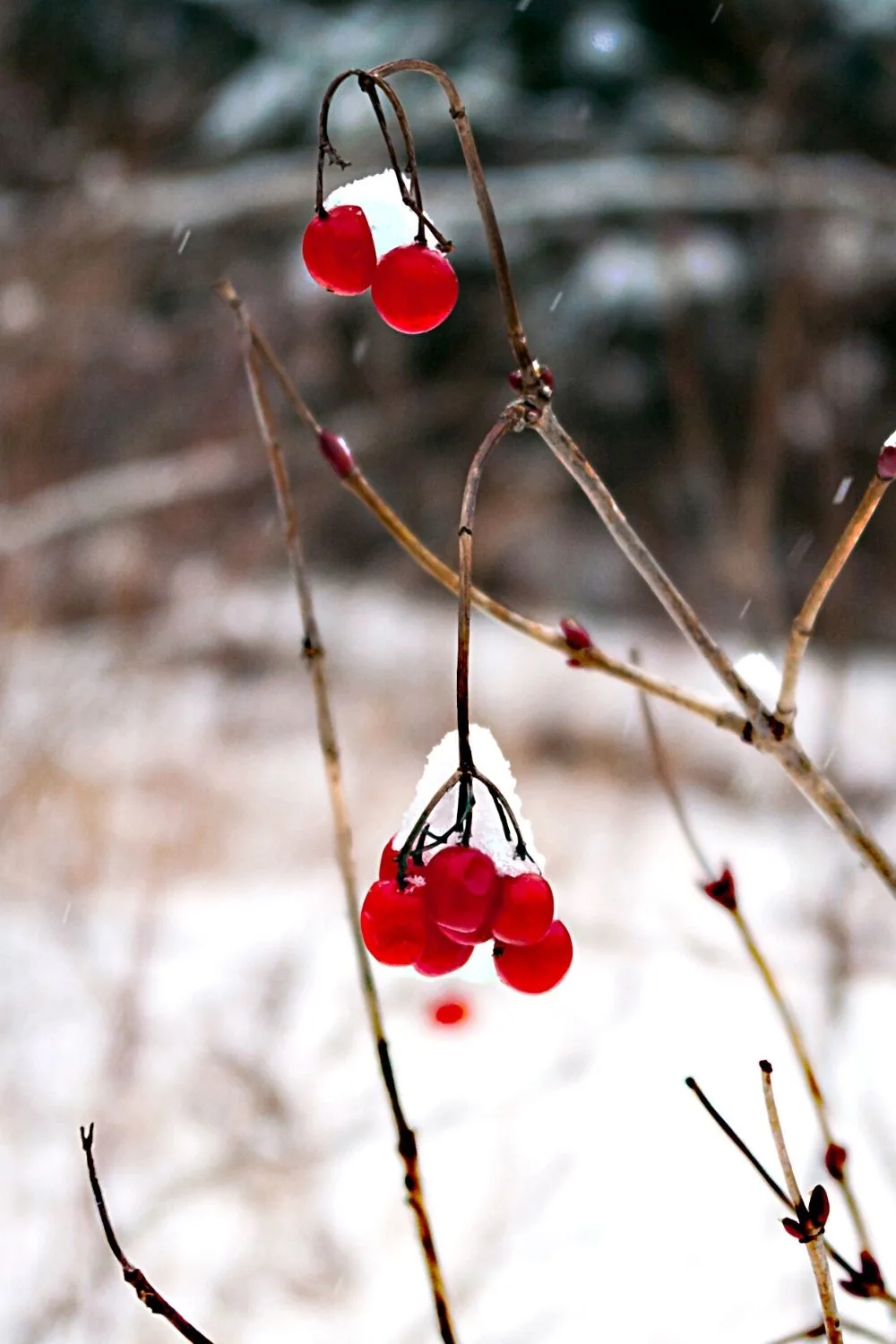
If you want to attract birds to the east-facing side of the house, plant Brilliant Red Chokeberry
A beautiful plant with stunning dark green foliage will make your east-facing garden more appealing.
It produces bright-red, glossy, long-lasting berries with blooms in May. An added advantage of having a Brilliant Red Chokeberry plant is attracting birds to your garden.
- Scientific name: Aronia arbutifolia
- Family: Rosaceae
- Temperature: -40 – 10 °F (-40 – 12.2°C)
- pH: 5.0 – 8.0
- Soil: wet, normal, clay, sandy
- Lighting: 2-6 hours of sunlight
- Growth rate: Slow
20. Japanese Aralia
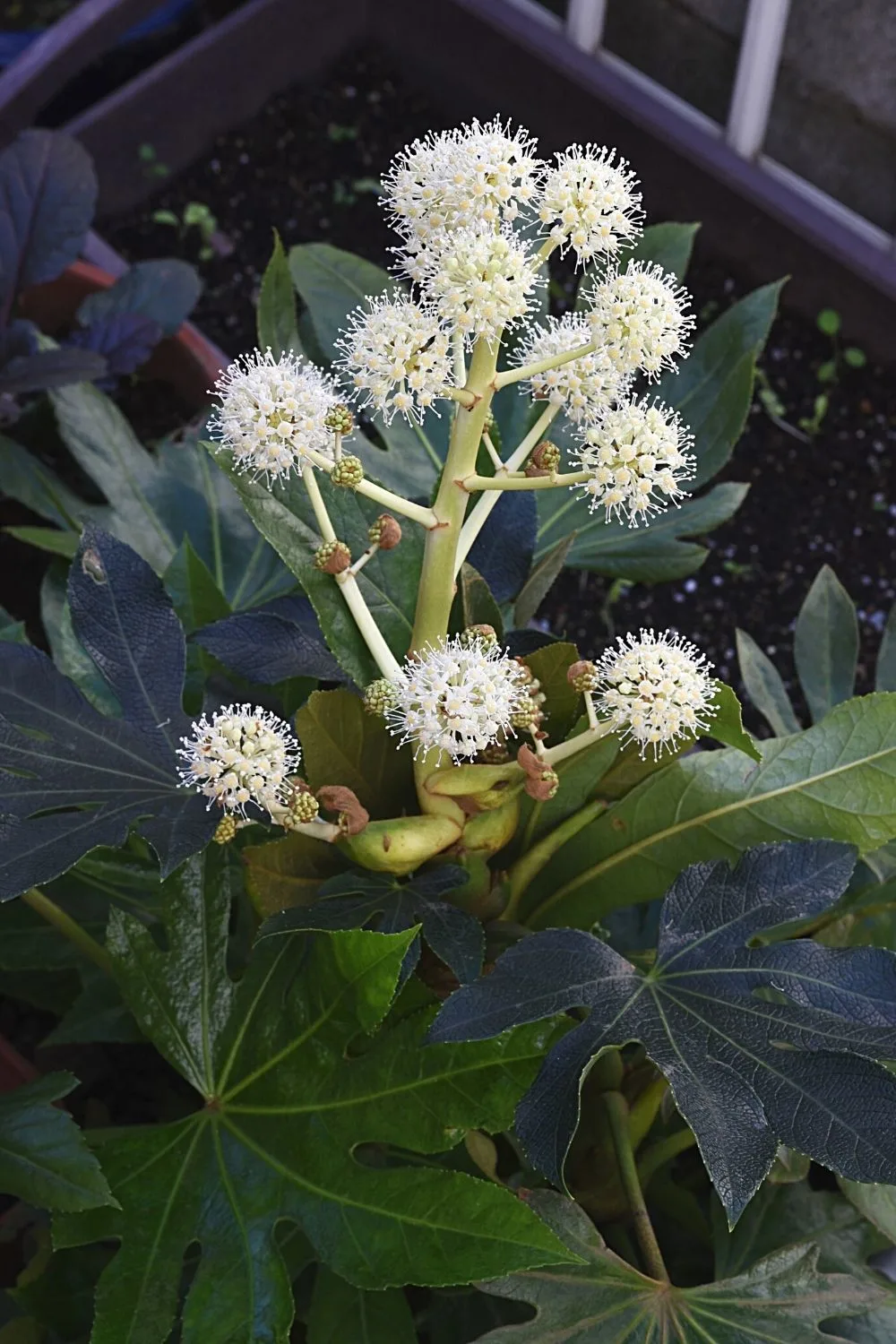
Japanese Aralia thrives in the east-facing side of the house as it can’t tolerate direct sun for prolonged hours
Fatsia Japonica doesn’t like the direct sun for prolonged hours and is perfect for east-facing gardens. The plant produces deeply lobed, large leaves that can grow up to 30 cm in width.
It is mostly leaning to one side as the leaves are too heavy. The flowering time is based on the climate.
Fatsia mainly produces flowers in the fall in the U.S.
- Scientific name: Fatsia japonica
- Family: Araliaceae
- Temperature: 45 – 55 °F (7.2 – 12.7°C)
- pH: 6.0 – 8.0
- Soil: acidic, well-drained, and rich in organic matter
- Lighting: full to medium shade
- Growth rate: Moderate to fast
21. Daylillies
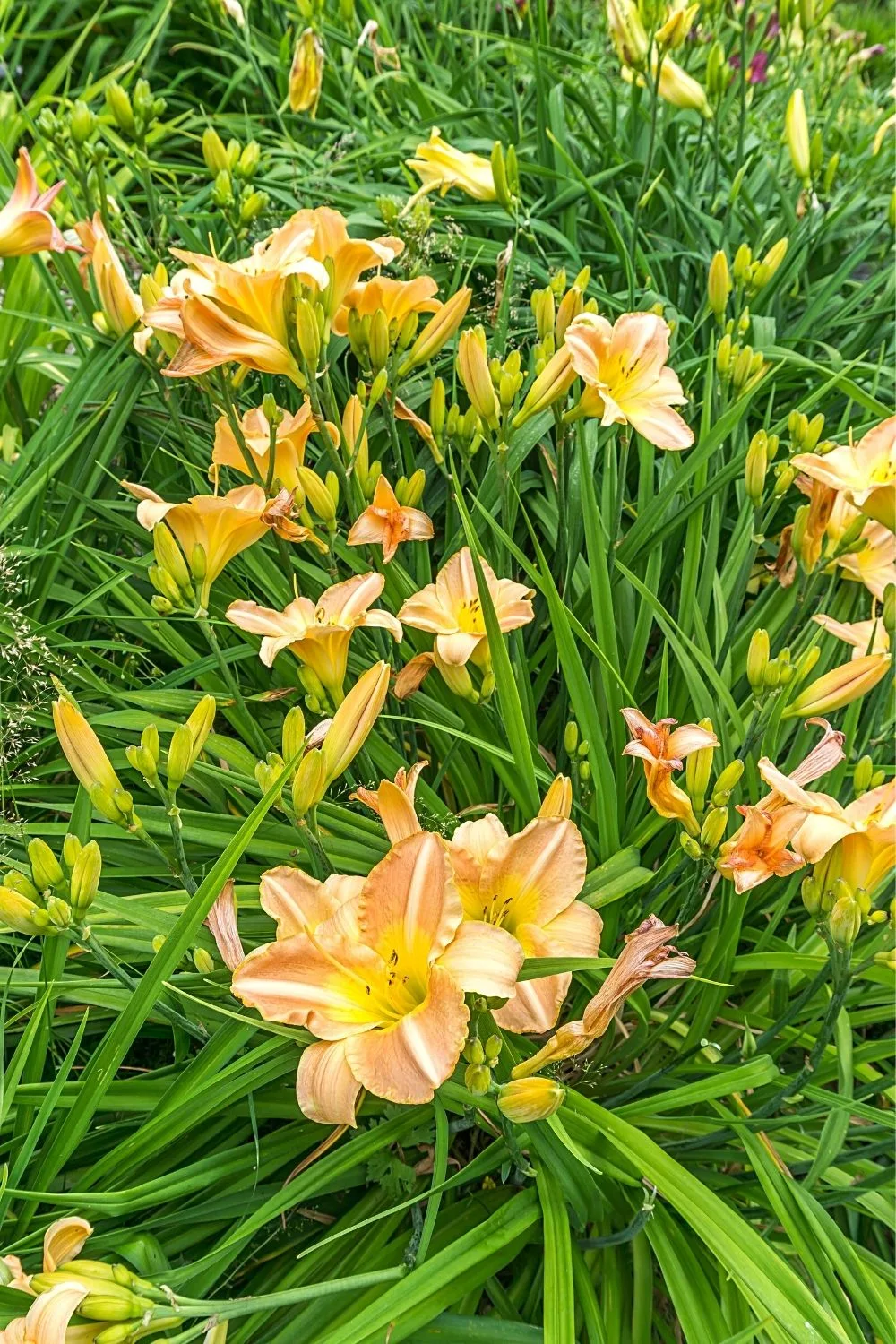
Daylillies are low-maintenance perennial plants you can grow on the east-facing side of the house
Daylillies are astonishingly low-maintenance perennial plants.
They are effortless to grow, almost disease and pest free, and can thrive in uneven sunlight, poor soil, and drought.
- Scientific name: Hemerocallis
- Family: Asphodelaceae
- Temperature: >-3 °F (-13.4 °C)
- pH: 6.0 – 6.5
- Soil: acidic, well-drained, and rich in organic matter
- Lighting: 4 – 6 hours
- Growth rate: Slow
22. Pansy
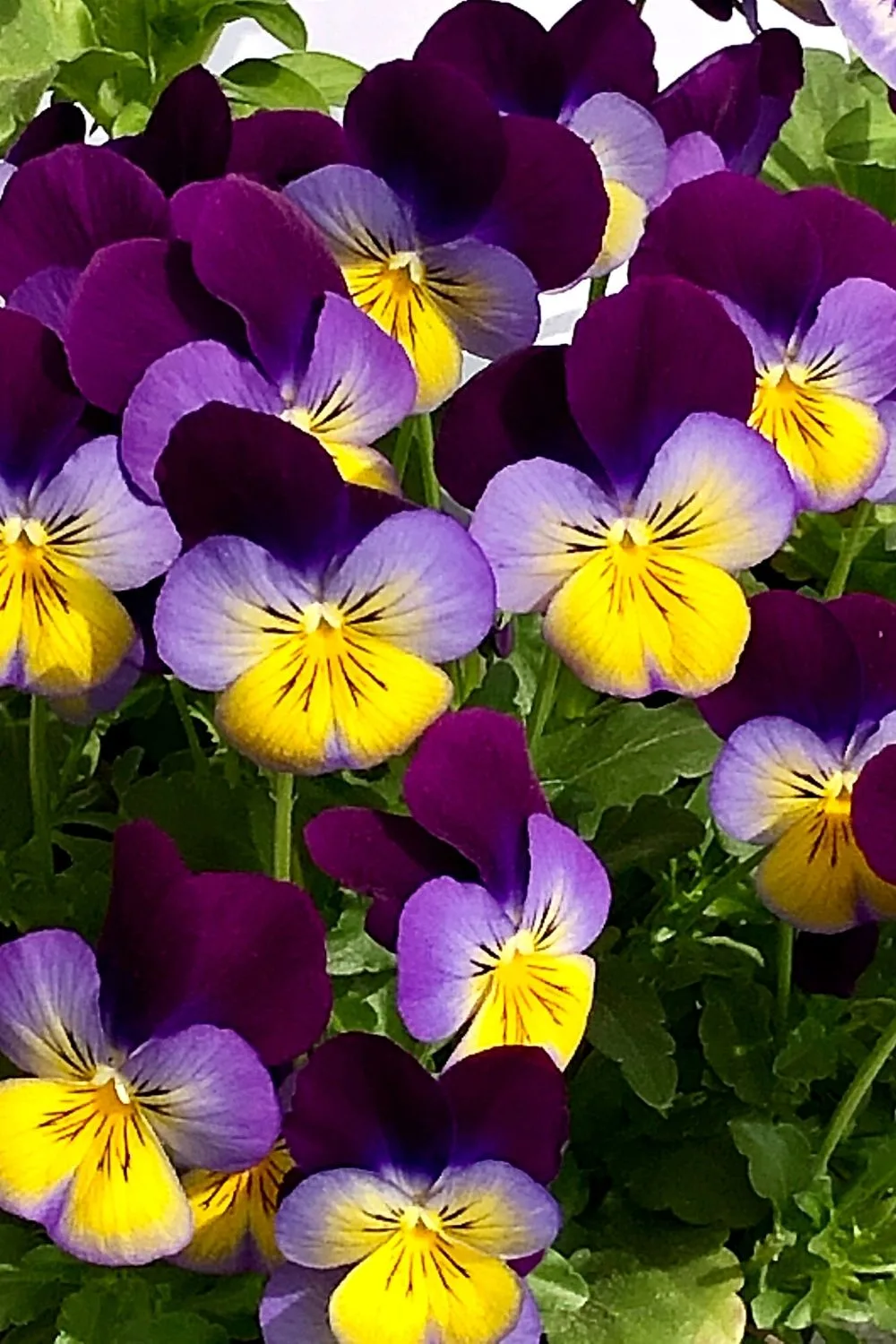
Whether you grow Pansy in a pot, as a border plant, or in the garden, it will thrive in the east-facing side of the house
Pansies are famous for their colorful flowers having ‘faces’. They consist of overlapping, heart-shaped petals and have the broadest range of pretty, bright hues and patterns.
They are effortless to maintain and can be grown in pots, borders, or gardens.
If you want to enhance the beauty of your east-facing garden, Pansies will be the right choice.
- Scientific name: Viola tricolor var. hortensis
- Family: Violaceae
- Temperature: 45 – 65 °F (7 – 18 °C)
- pH: 5.4 – 5.8
- Soil: moist, rich loam soil
- Fertilizer: 20-20-20 fertilizer or a slow-release fertilizer. However, always remove old, faded, and damaged flowers to help Pansies thrive.
- Lighting: partial shade to full sun
- Growth rate: Fast
23. Violet
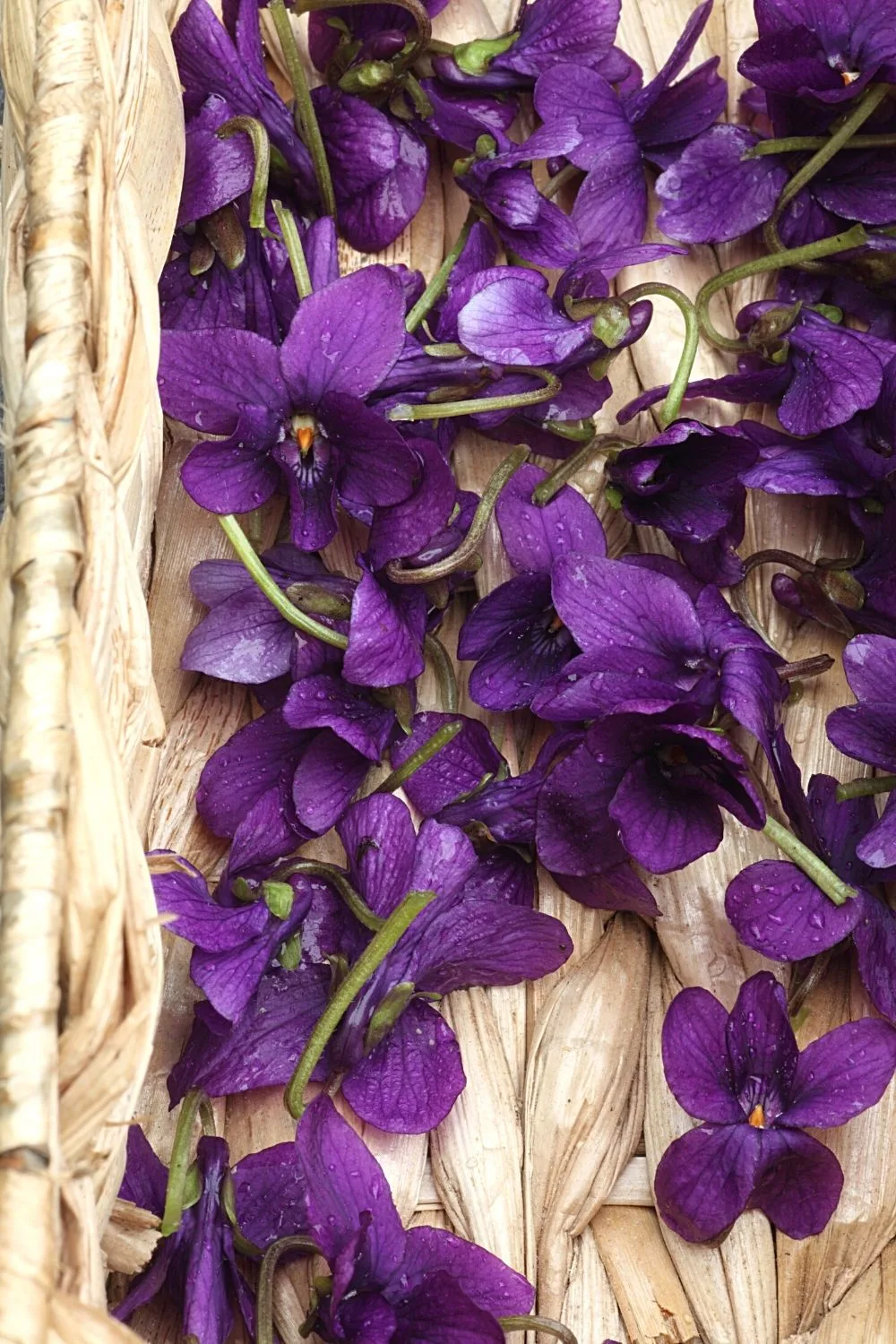
Violet (Genus Viola) is a bold flowering plant you can grow on the east-facing side of the house
When you are searching for an attractive, bold flowering plant that is intensely low on maintenance, the sweet violet is a great way to begin.
The plant contains more than 500 species. They can live up to 2 years; however, they seed and grow on their own in the following season without you putting any effort.
- Scientific name: Viola odorata
- Family: Violaceae
- Temperature: 40 – 70 °F (4.44 – 21.1 °C)
- pH: 5.4 – 6.2
- Soil: moist, rich, well-draining soil
- Fertilizer: Add a slow-release fertilizer into the soil. Fertilize twice, once in spring and then in late summer.
- Lighting: partial shade to full sun
- Growth rate: Fast
24. Azaleas
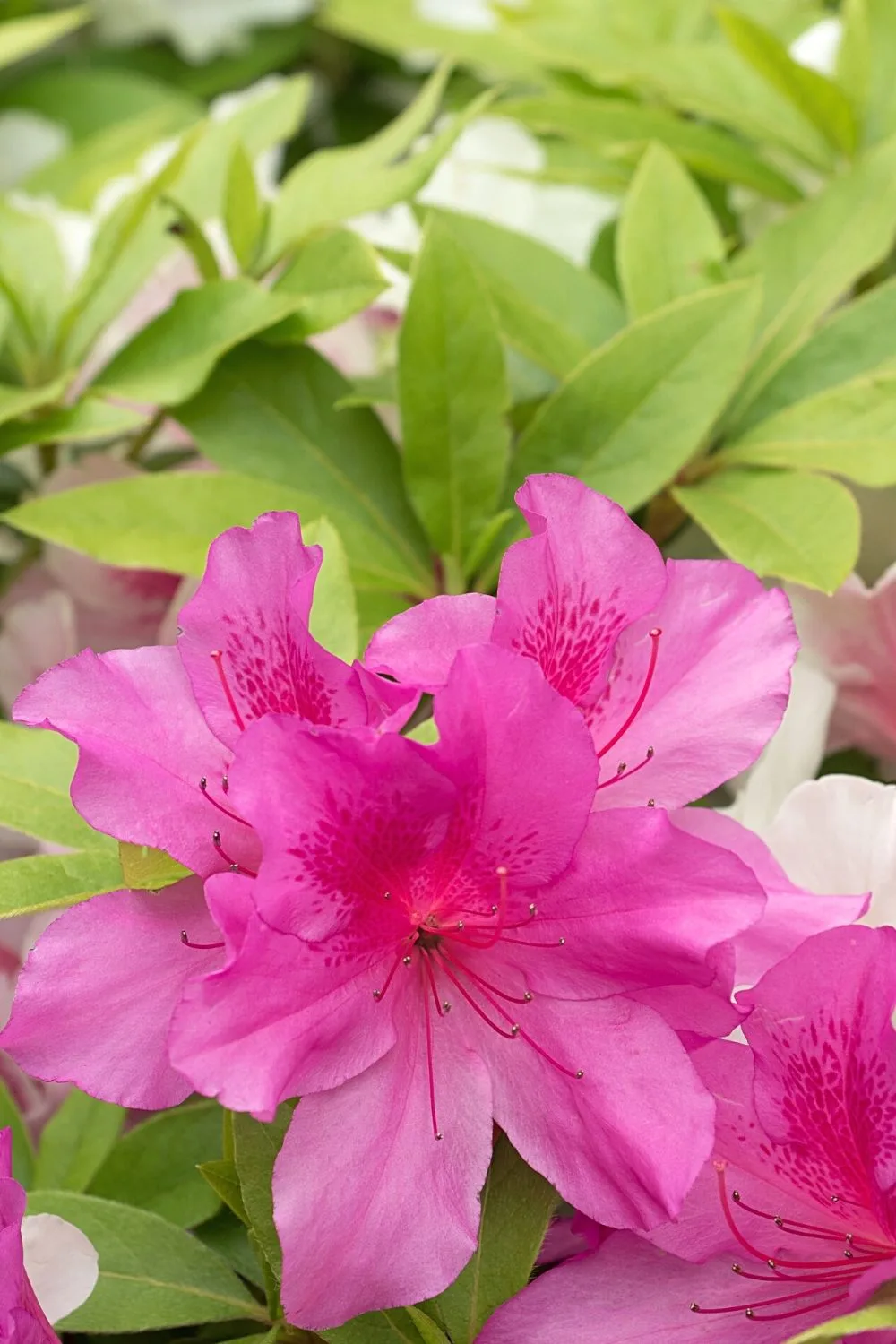
Azaleas, low-maintenance plants that bloom in various colors, thrive best on the east-facing side of the house
Nothing looks more beautiful in an east-facing garden than a blooming Azalea plant. These low-maintenance plants come in various colors, and thus you can easily find your favorite one.
To make azaleas thrive at their best, growing them in spring is crucial.
- Scientific name: Rhododendron
- Family: Ericaceae
- Temperature: Above 32 °F (0 °C) to 90 °F (32.2 °C)
- pH: 4.5 – 6.0
- Soil: moist, acidic, well-drained soil, rich in organic matter, like compost, peat, ground bark, or chopped leaves.
- Fertilizer: A balanced, nitrogen-rich fertilizer (15-15-15). Fertilize only when the plant needs it.
- Lighting: partial shade (4 hours of sunlight)
- Growth rate: Slow
25. Hydrangea
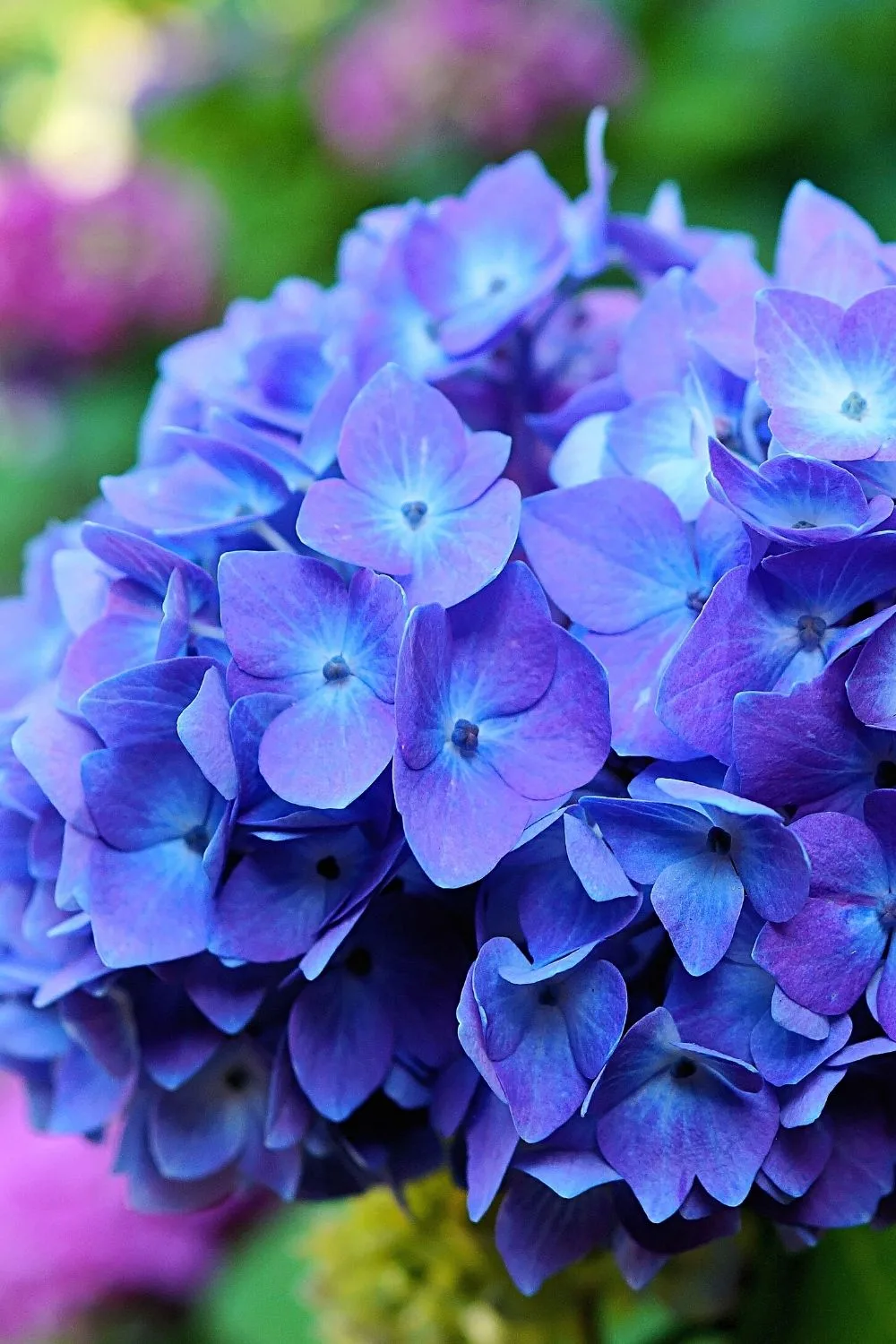
Another eye-catching plant you can grow on the east-facing side of the house is Hydrangeas
Growing Hydrangea is the next level of eye-catchiness because of the ever-changing colors of its flowers. Yes! They turn blue in acidic soil and pink in the one containing more lime.
And then we have white Hydrangeas – ones that resemble snowballs.
Besides being low-maintenance, an added advantage of Hydrangea is that they are very much resistant to diseases and pests.
- Scientific name: Hydrangea
- Family: Hydrangeaceae
- Temperature: Above 12 °F (-11.11 °C)
- pH: 5.5 for blue flowers and 6.5 for pink ones
- Soil: friable, loamy soil with rich organic content
- Fertilizer: No fertilizer is needed for rich soil
- Lighting: 3-6 hours of sunlight
- Growth rate: Fast
26. Hummingbird Fuchsia
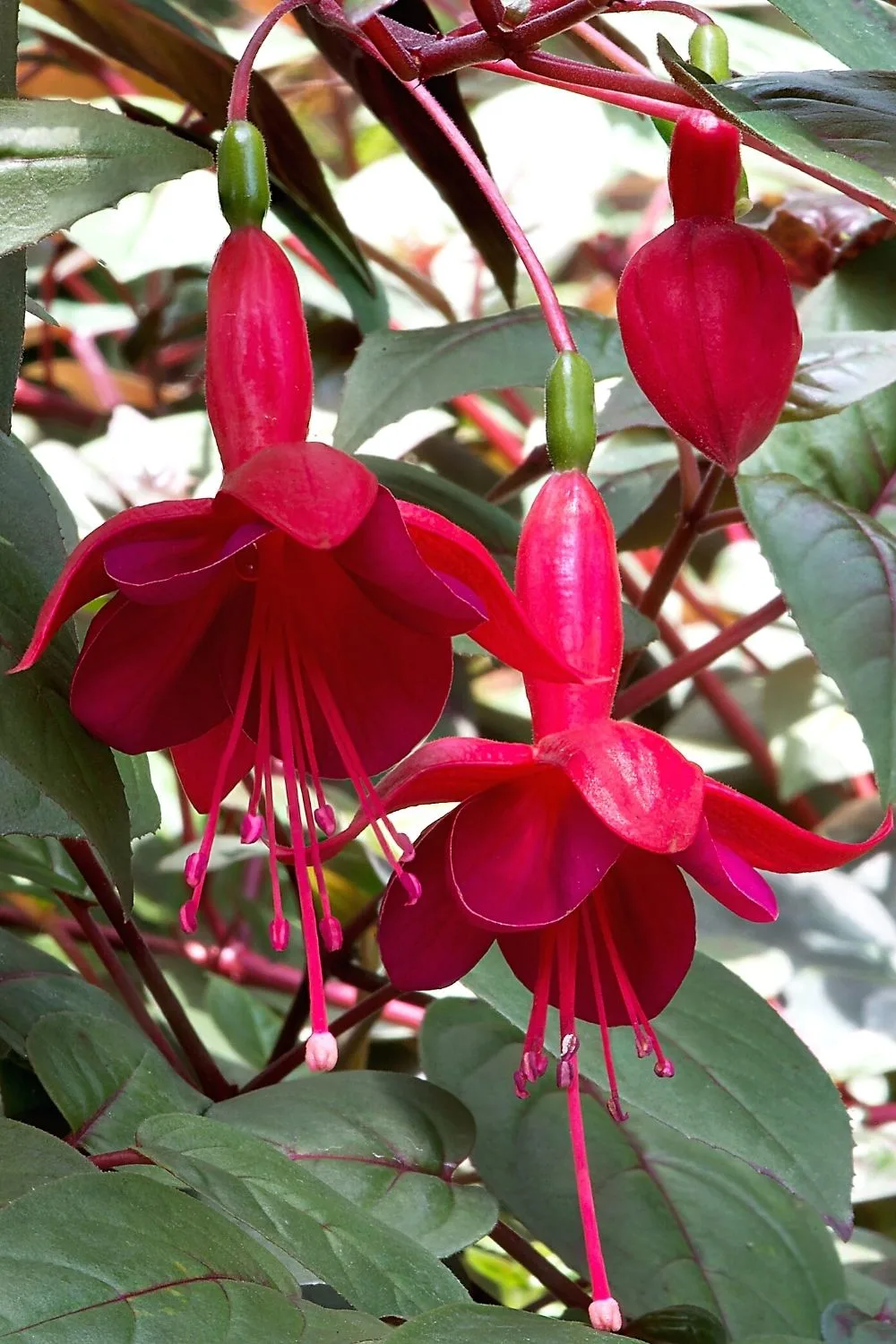
Fuchsia is another stunning plant you can grow on the east-facing side of the house
A fuchsia blooms over a very long period, from spring to winter; it packs a punch when it comes to flower power.
Blossoms consist of a wide range of colors such as pink, white, purple, red, orange, lavender, and yellow. It’s easy to find a fuchsia flower tone that pleases every gardener.
- Scientific name: Fuchsia magellanica
- Family: Onagraceae
- Temperature: 55° to 80°F (-11.11 °C)
- pH: 6.0 – 7.0
- Soil: moist, well-drained, and rich in organic matter. Add compost or peat moss before planting.
- Fertilizer: Fertilizing regularly with a balanced fertilizer, having an equal quantity of phosphorus, nitrogen, and potassium.
- Lighting: bright, indirect sunlight in the morning
- Growth rate: Moderate
27. Variegated Lilyturf
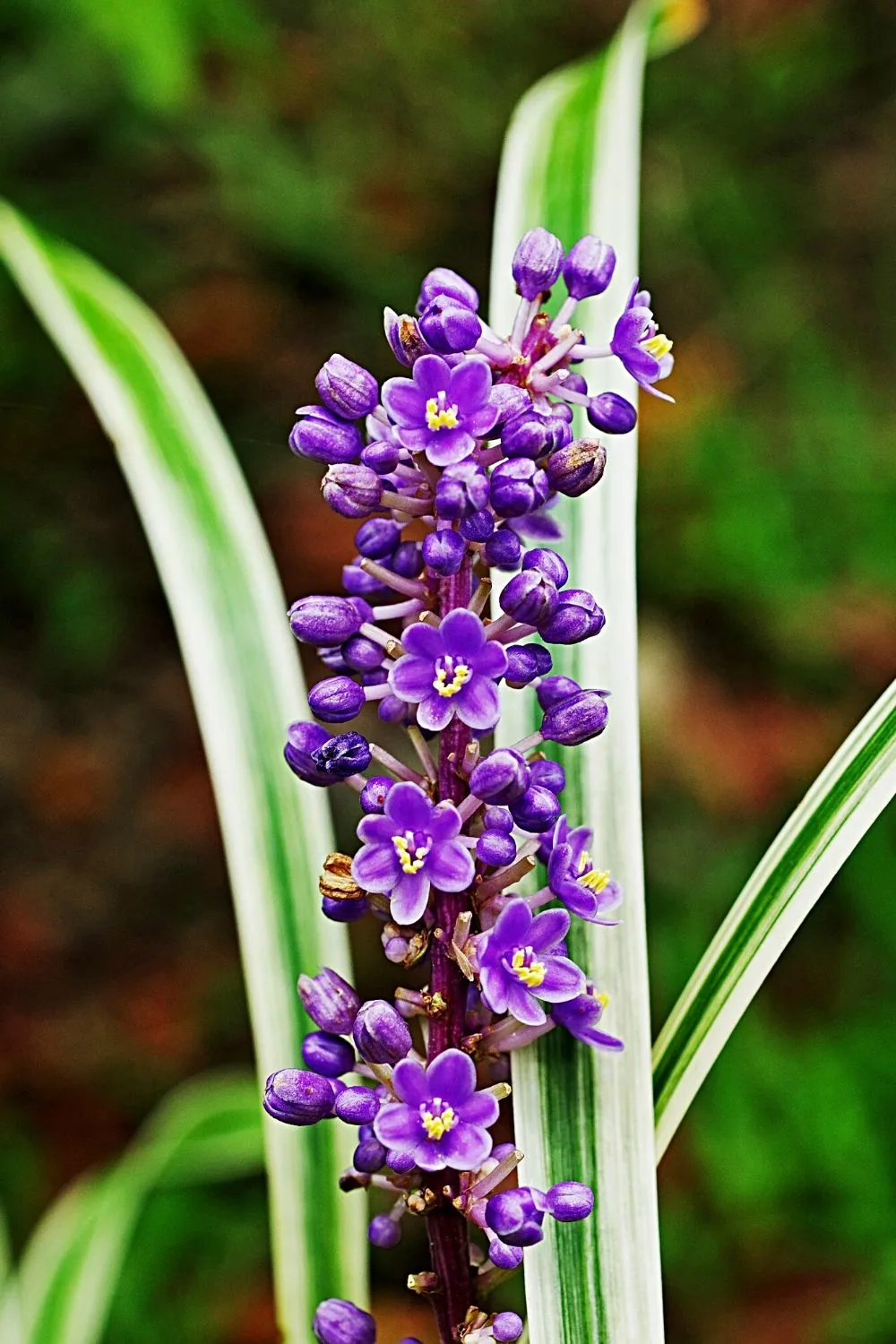
Variegated Lilyturf is another stunning, low-maintenance plant you can grow on the east-facing side of the house
Variegated lilyturf is a beautiful perennial plant with grass-like leaves and spikes of blue, violet, or white flowers in bloom from spring to winter.
The plant requires almost no care and can easily tolerate humidity, drought, heat, and cold.
Bright yellow stripes are visible along with the dark green foliage of this fascinating perennial plant.
- Scientific name: Liriope muscari ‘Variegata’
- Family: Asparagaceae
- Temperature: 68 – 75°F (20 – 23.8 °C)
- pH: 6.0 – 7.0
- Soil: moist, well-drained, moderately fertile, and acidic soil
- Fertilizer: Add a slow-release fertilizer in early spring.
- Lighting: partial shade to full sun
- Growth rate: Moderate
28. Hybrid Lenten Rose

Hybrid Lenten Rose loves the shade that the east-facing side of the house provides
Hybrid Hellebores love shades and are therefore perfect for an east-facing garden. It’s not only easy to maintain but blooms for an extended period.
They look exquisite because of their spotted flowers and dark center.
Additionally, they are available in almost any color you’re looking for, including pink, white, purple, apricot, green, etc.
- Scientific name: Helleborus. L.
- Family: Ranunculaceae
- Temperature: Above 10 °F (-12.2°C)
- pH: 6.1 – 7.8
- Soil: perform well in soil that is deeply dug and contains humus, including compost, leaf mold, or old manure.
- Fertilizer: Use a fertilizer rich in organic matter when planting. Continue applying in early fall and spring.
- Lighting: partial shade to full sun
- Growth rate: Slow
29. Florist’s Cyclamen

If you want a miniature, sweet-smelling plant to grow on the east-facing side of the house, then plant Florist’s Cyclamen
Cyclamen, one of the most miniature flowering plants, has small, sweet-smelling flowers on long stems above its foliage.
Taking care of this plant is essential if you want to make it long-lasting. Their vibrant blooms and attractive leaves enhance the beauty of any east-facing garden.
- Scientific name: Cyclamen persicum
- Family: Primroses
- Temperature: 55 – 70 °F (12.7 – 21.11 °C)
- pH: 5.0 – 6.0
- Soil: loamy, moist, well-draining, acidic, and organically rich soil
- Fertilizer: fertilize the plant using low nitrogen fertilizer in early winter or fall, every week until it starts blooming. Once it has flowers, use a balanced houseplant fertilizer every 3 to 4 weeks.
- Lighting: partial shade
30. Virginia Bluebells
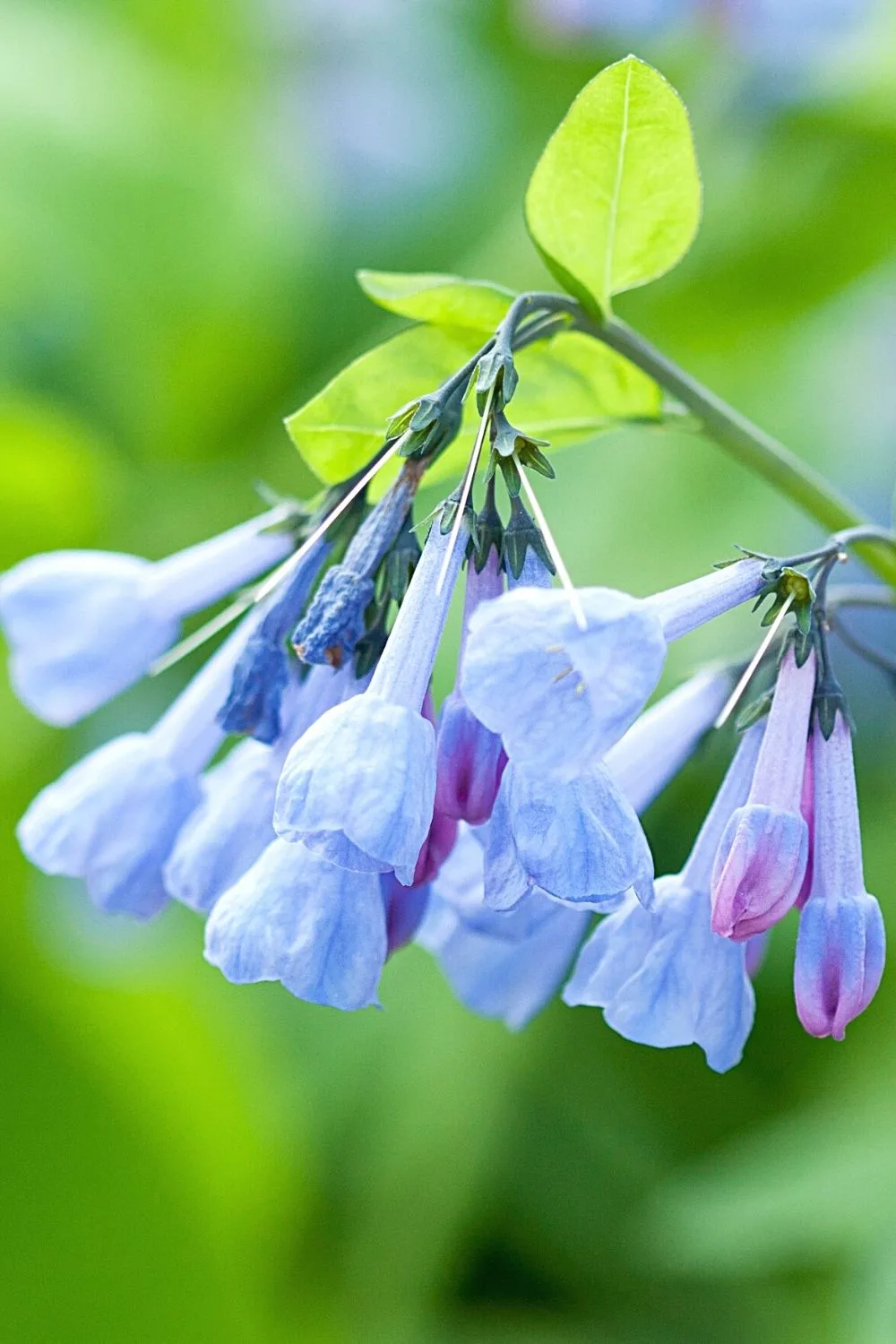
Virginia Bluebells attracts bees and butterflies when planted on the east-facing side of the house
The Mertensia genus produces pink buds which open to reveal beautiful blue blooms of a trumpet shape. The rounded, smooth leaves range in color from blue-green to grey-green.
They are exceptional because their bell clusters lure the fuzzing bees and butterflies of the new year.
- Scientific name: Mertensia virginica
- Family: Boraginaceae
- Temperature: 35 – 20 °F (1.66 – -6.66 °C)
- pH: 7.0
- Soil: loamy, moist, well-draining, and organically rich soil
- Fertilizer: Use ¼ cup per 100 square feet of the soil of 10-10-10 fertilizer as soon as new growth emerges in spring.
- Lighting: partial to full shade
- Growth rate: fast
Have a look at the best plants for east facing gardens next.

Daniel has been a plant enthusiast for over 20 years. He owns hundreds of houseplants and prepares for the chili growing seasons yearly with great anticipation. His favorite plants are plant species in the Araceae family, such as Monstera, Philodendron, and Anthurium. He also loves gardening and is growing hot peppers, tomatoes, and many more vegetables.

![30 Plants for East-Facing Side of House – Best Guide [2024]](https://plantophiles.com/wp-content/uploads/2022/04/30-Plants-for-East-Facing-Side-of-House-720x405.jpg.webp)
